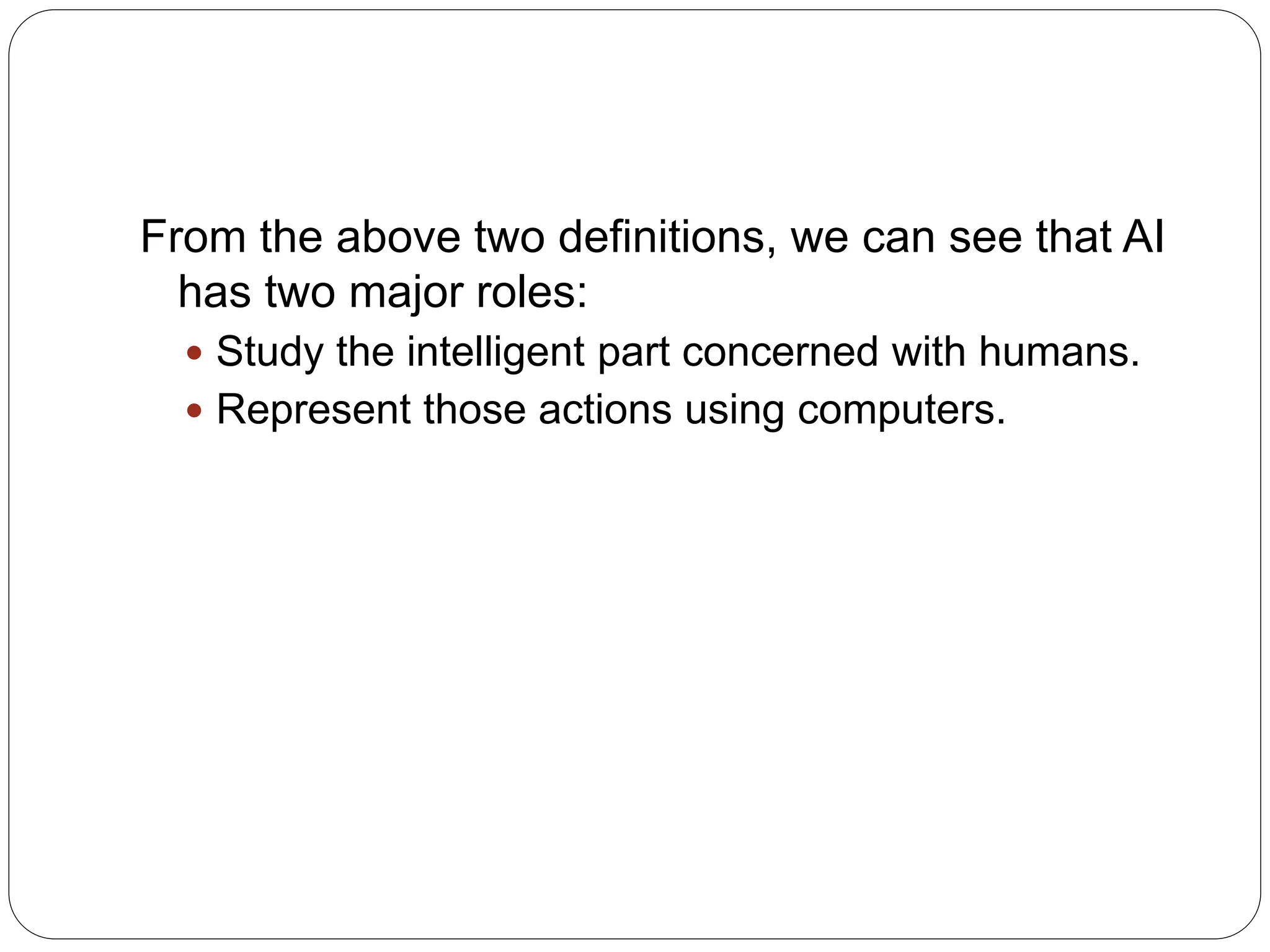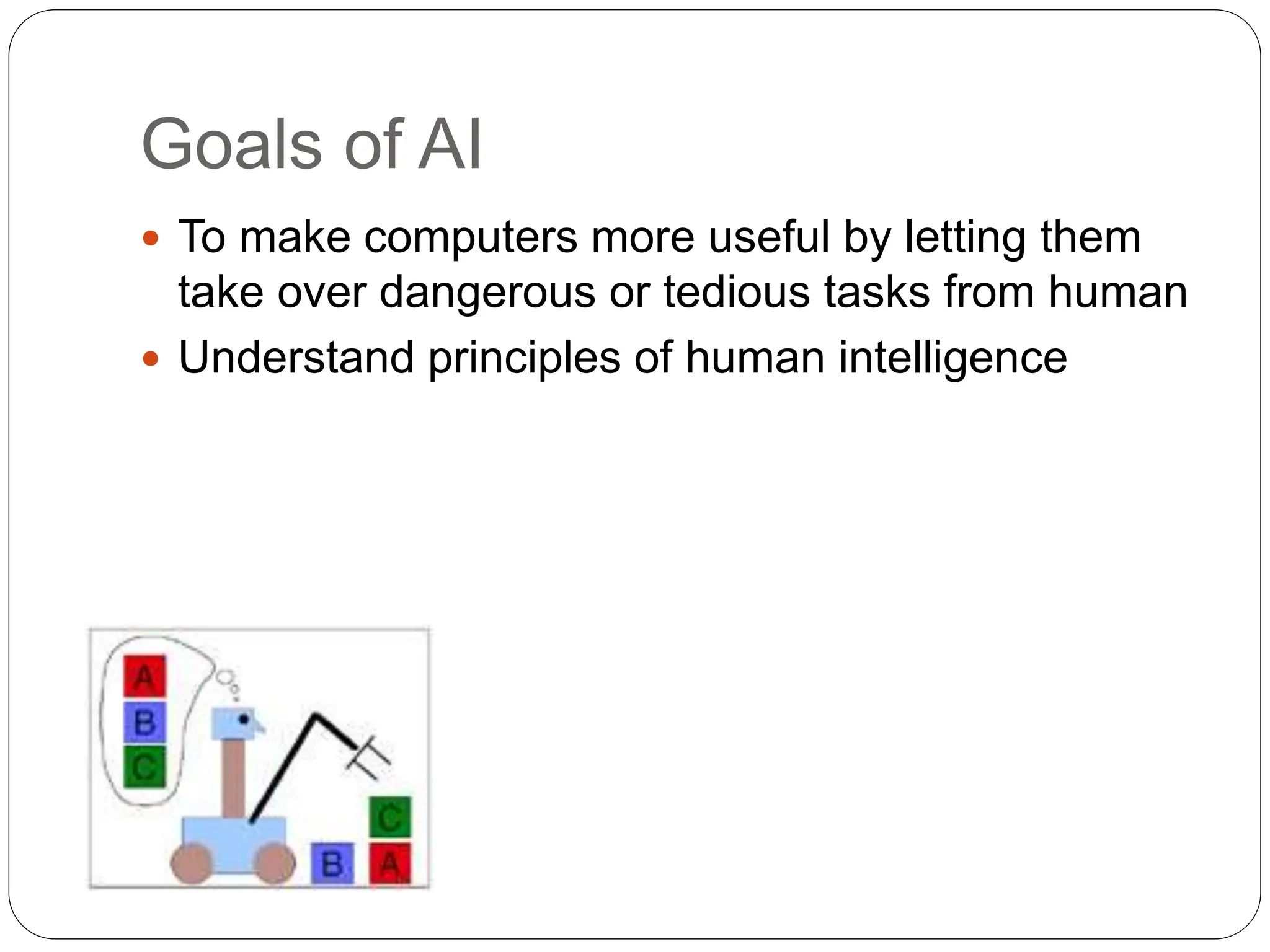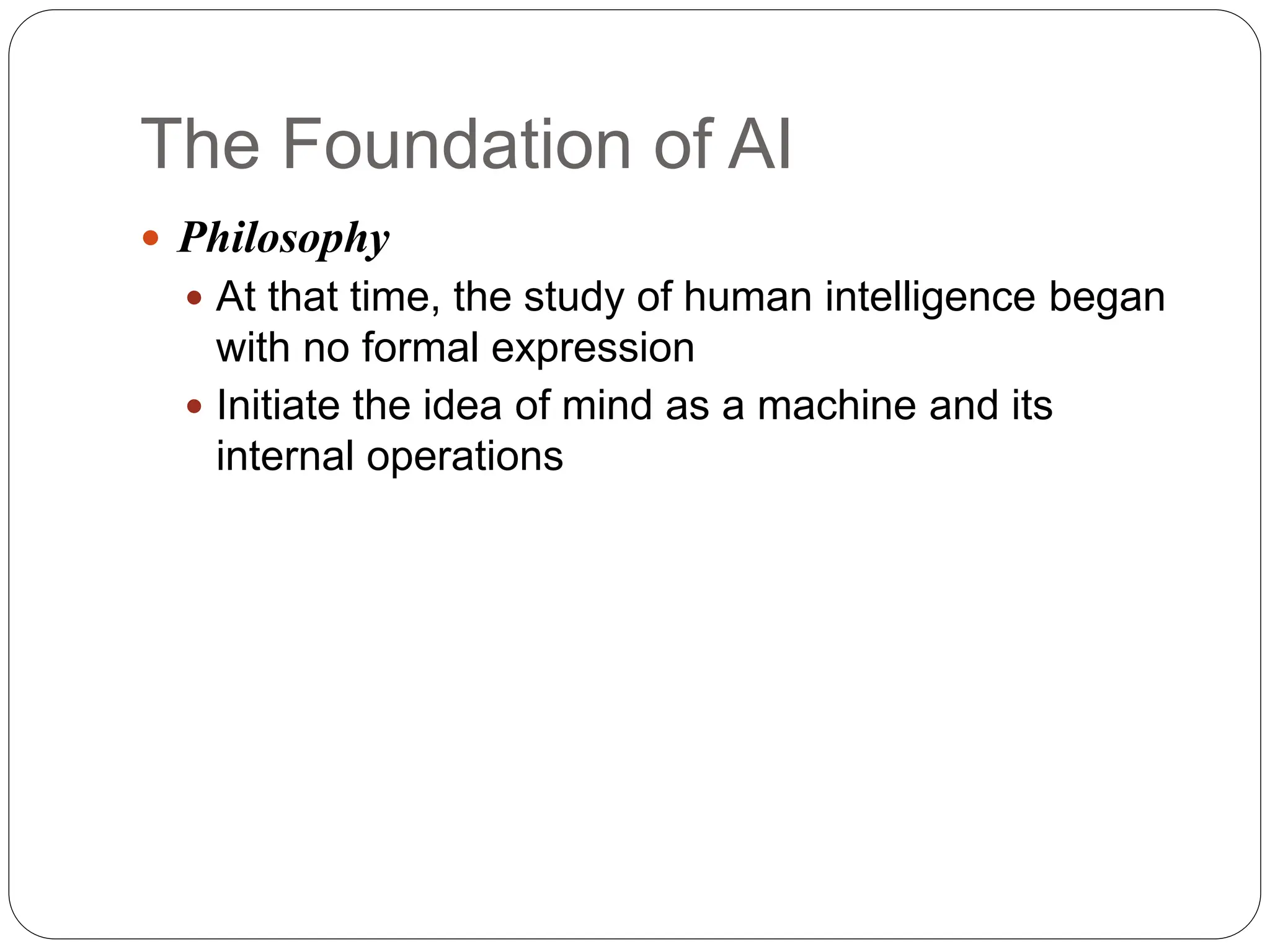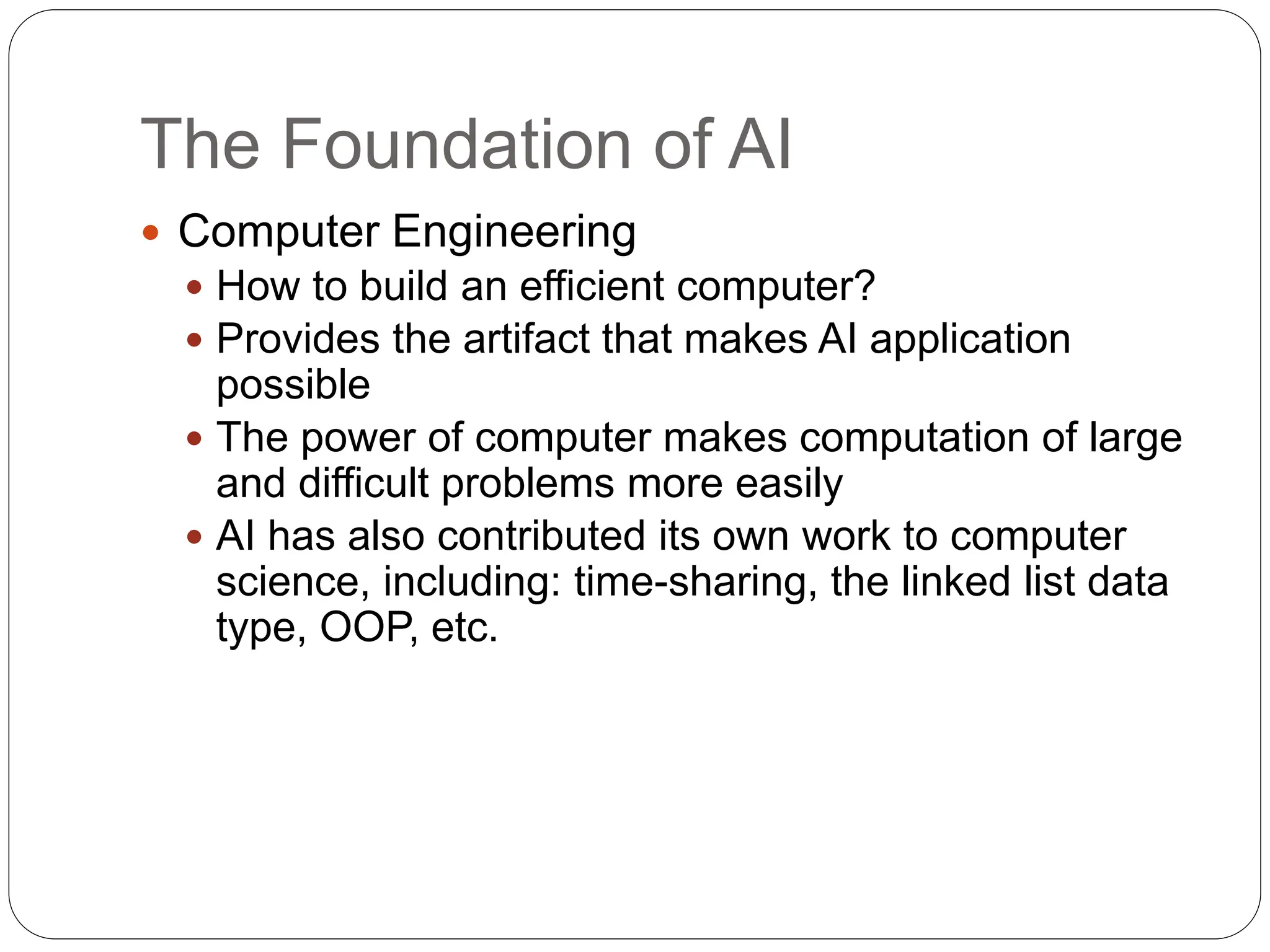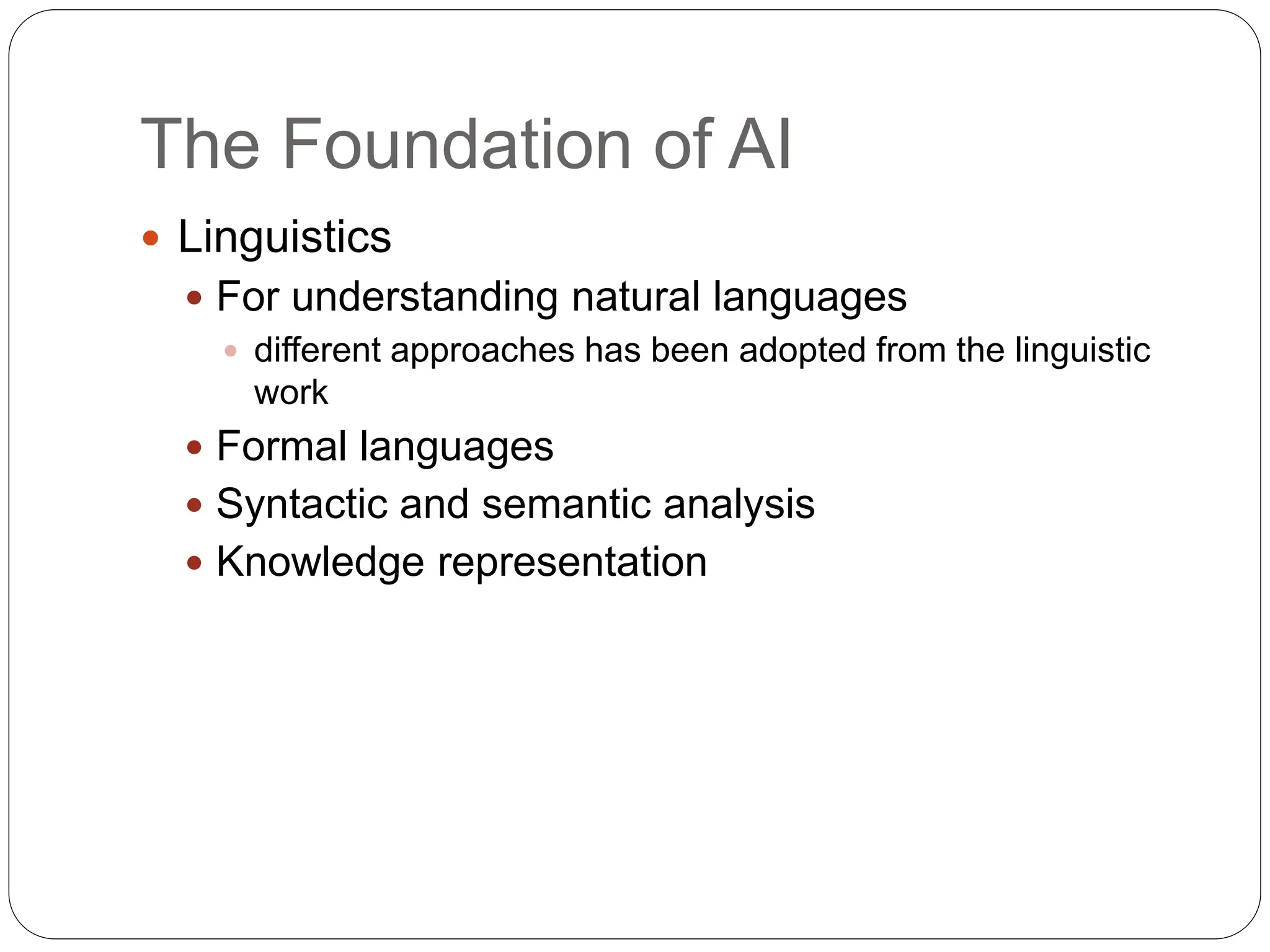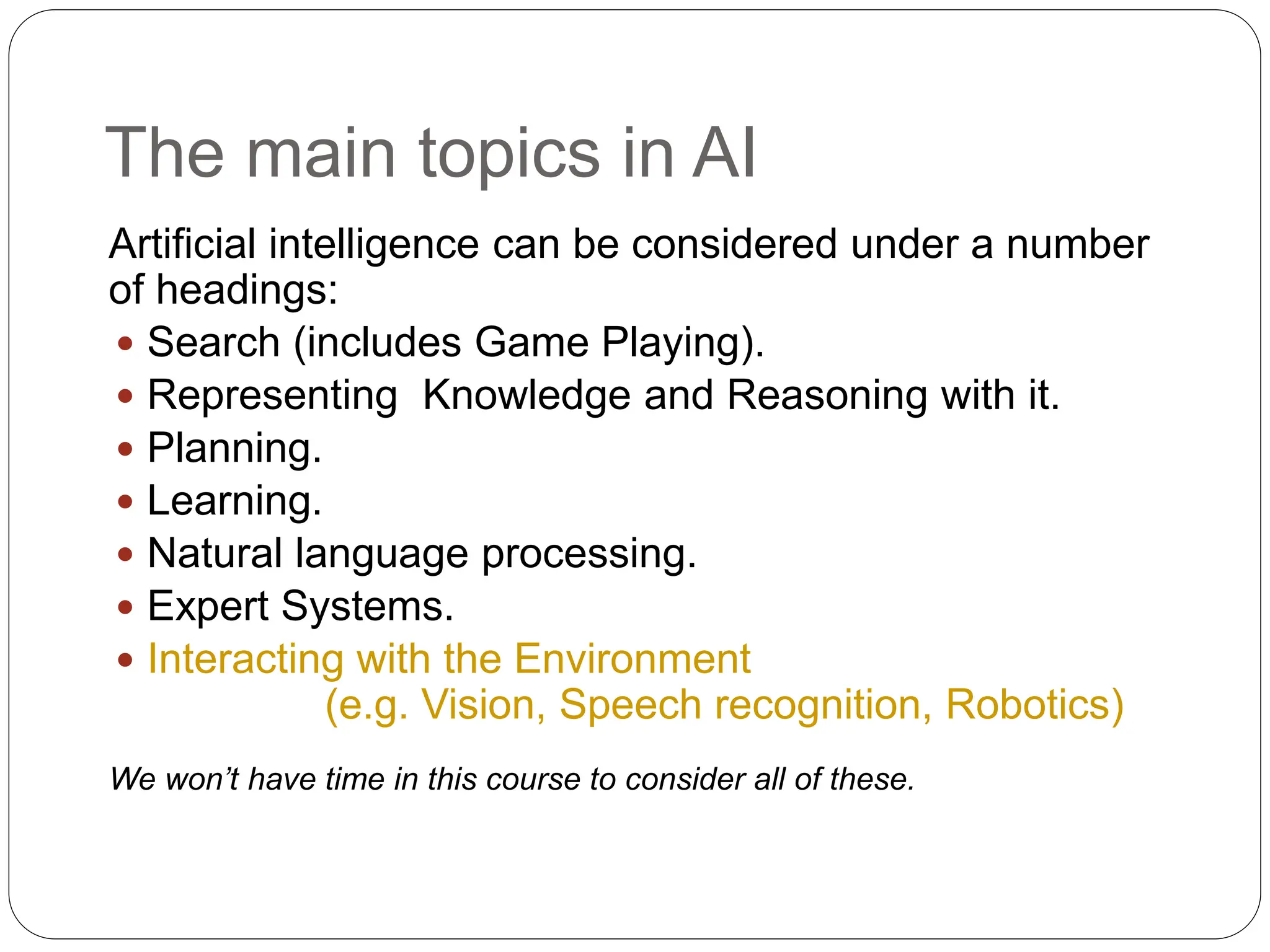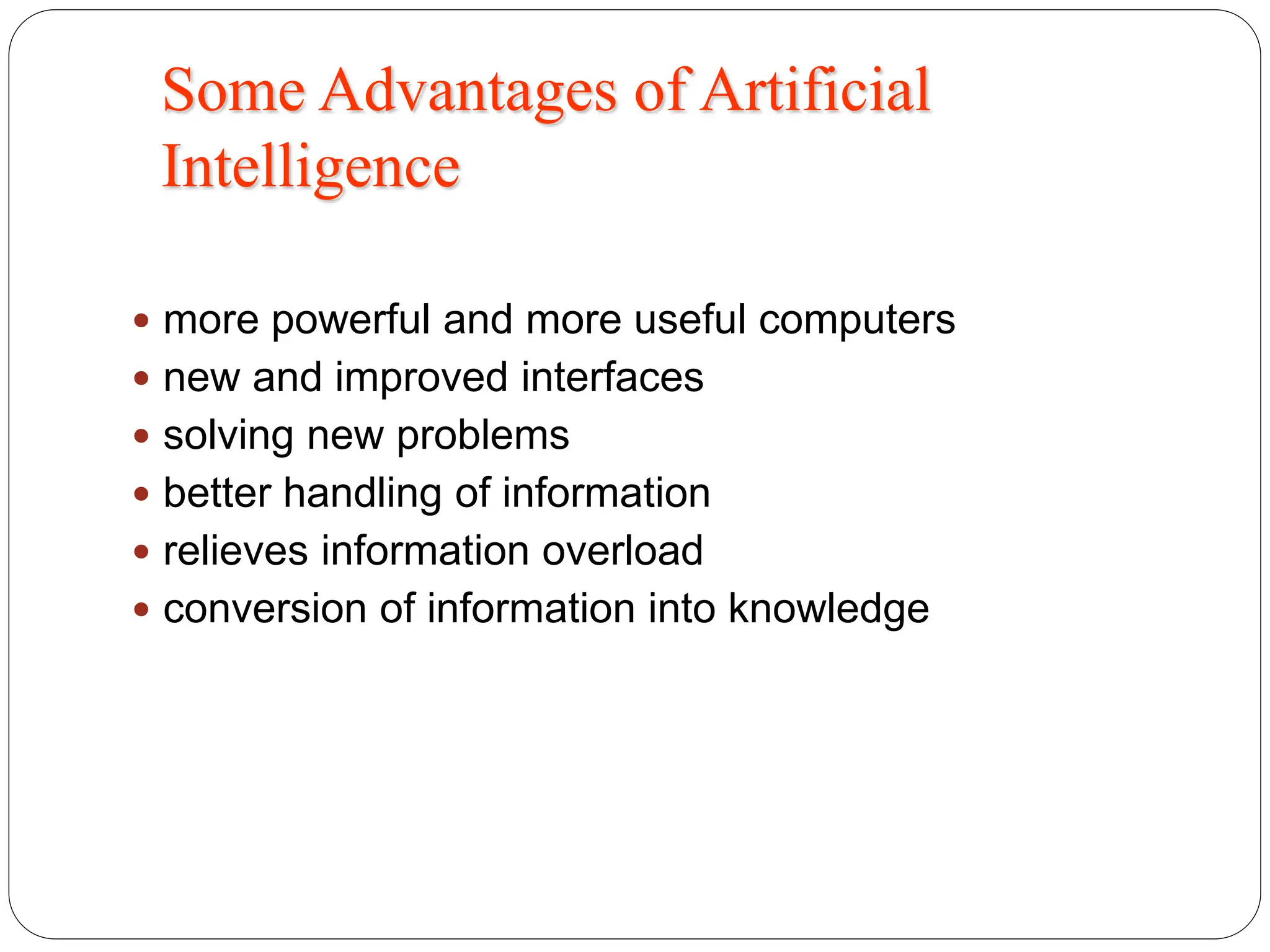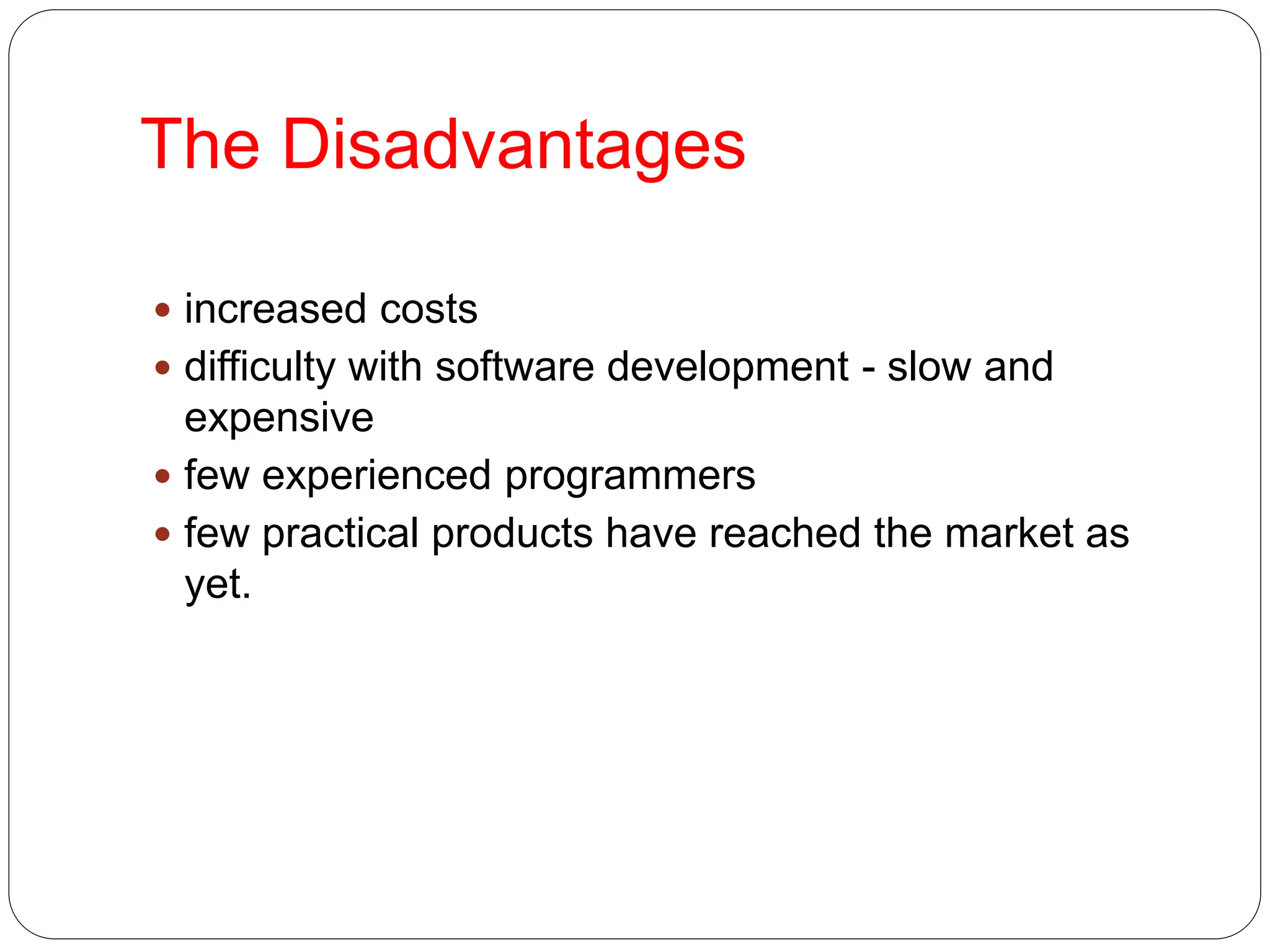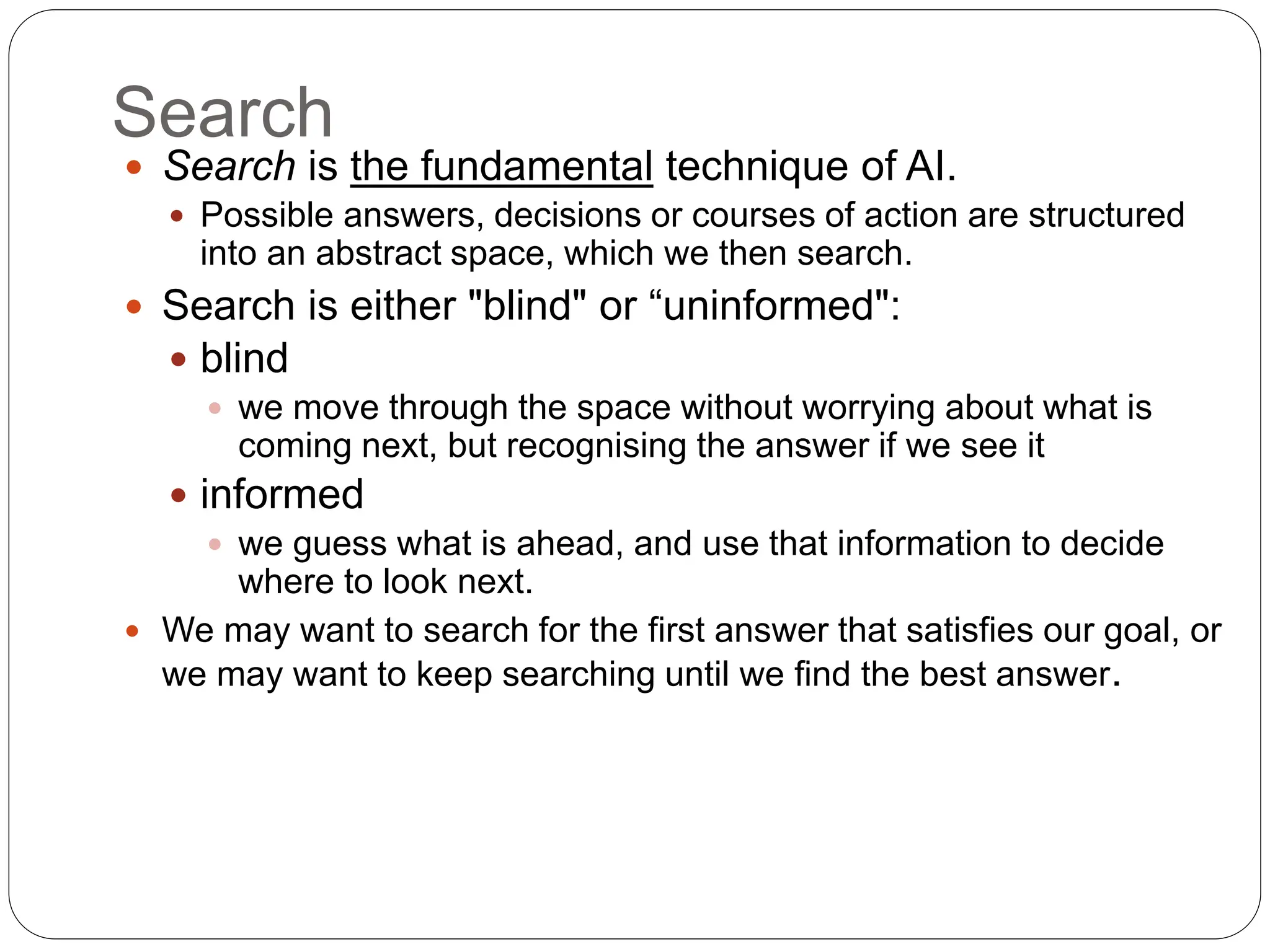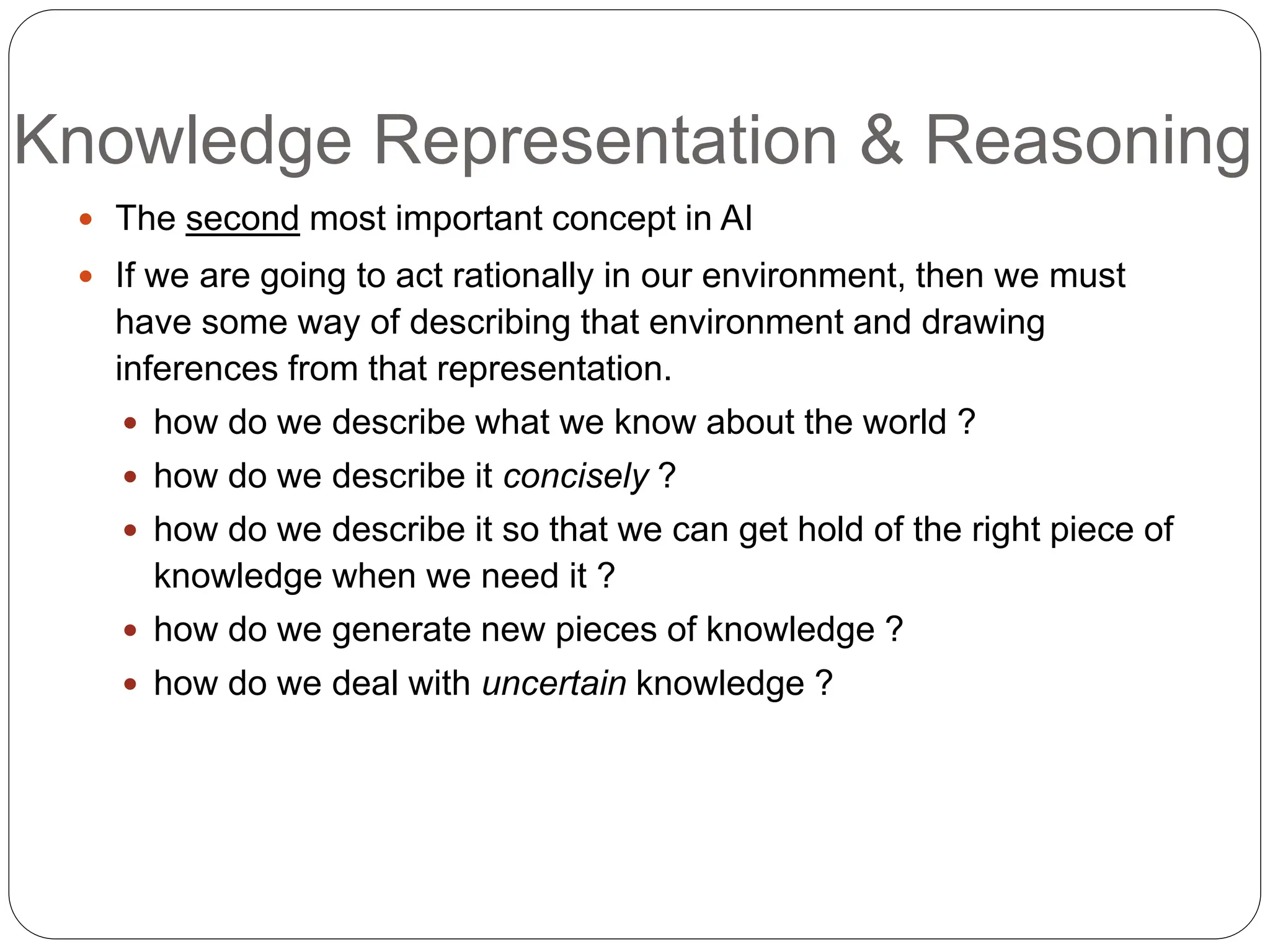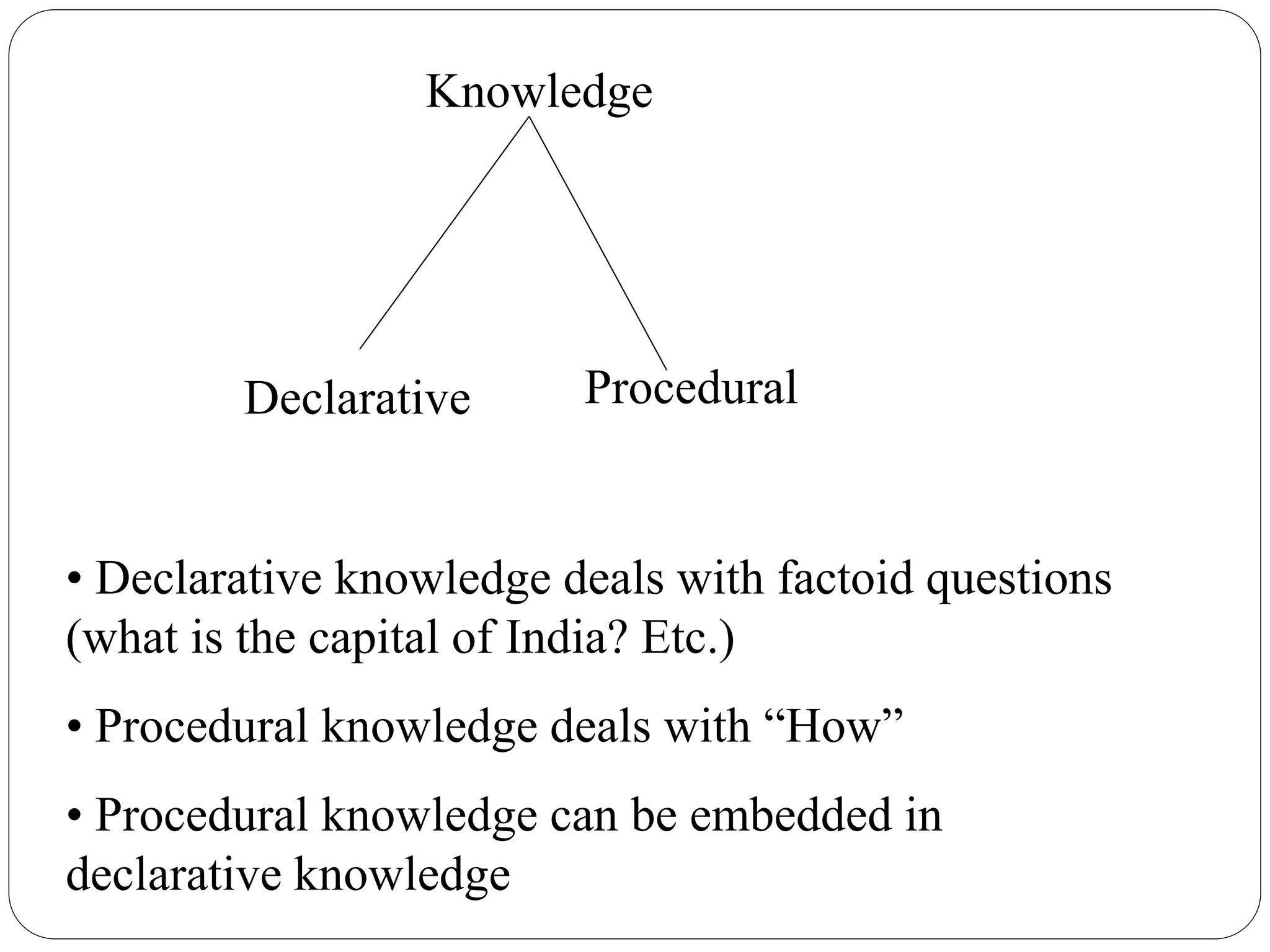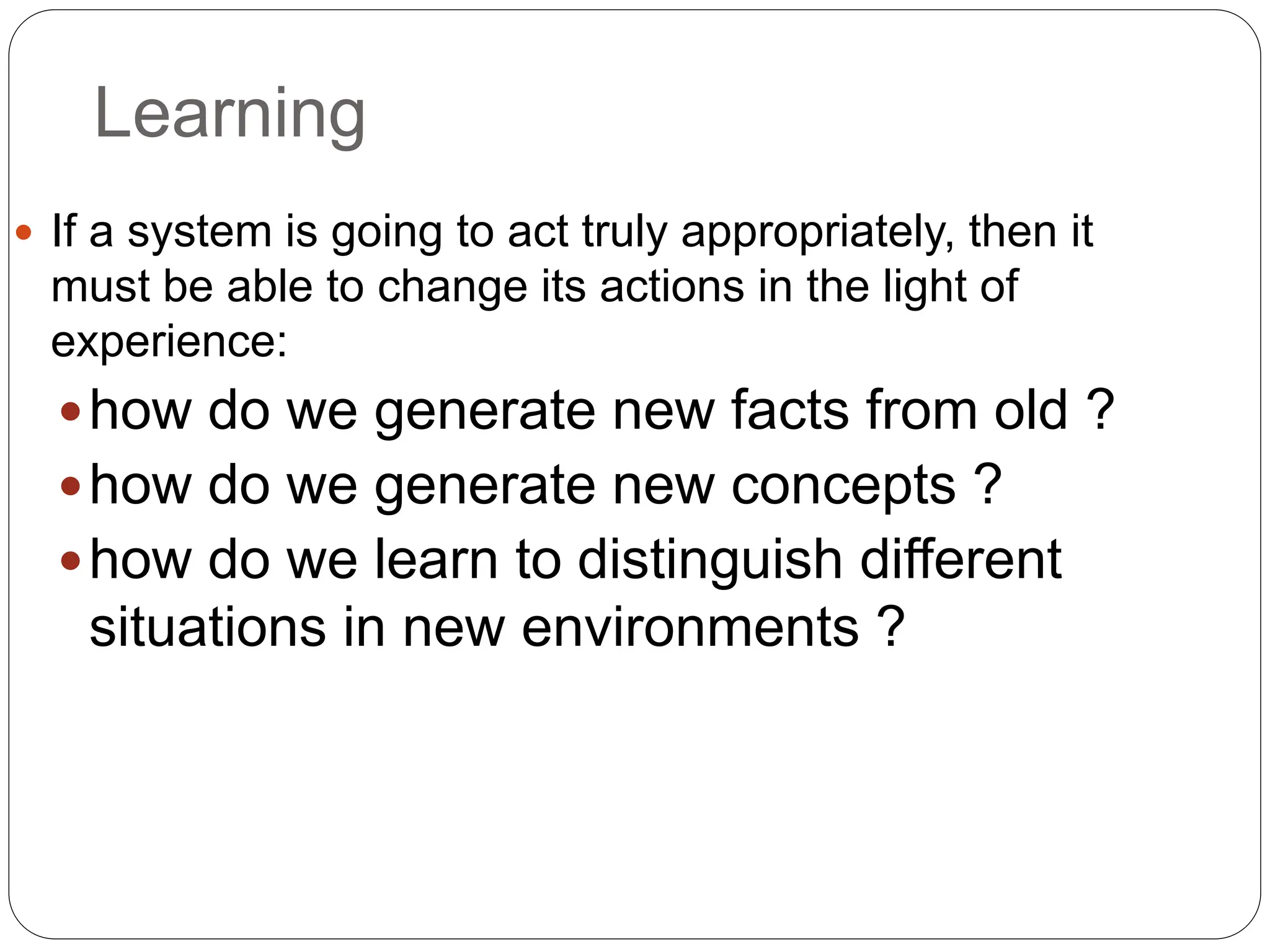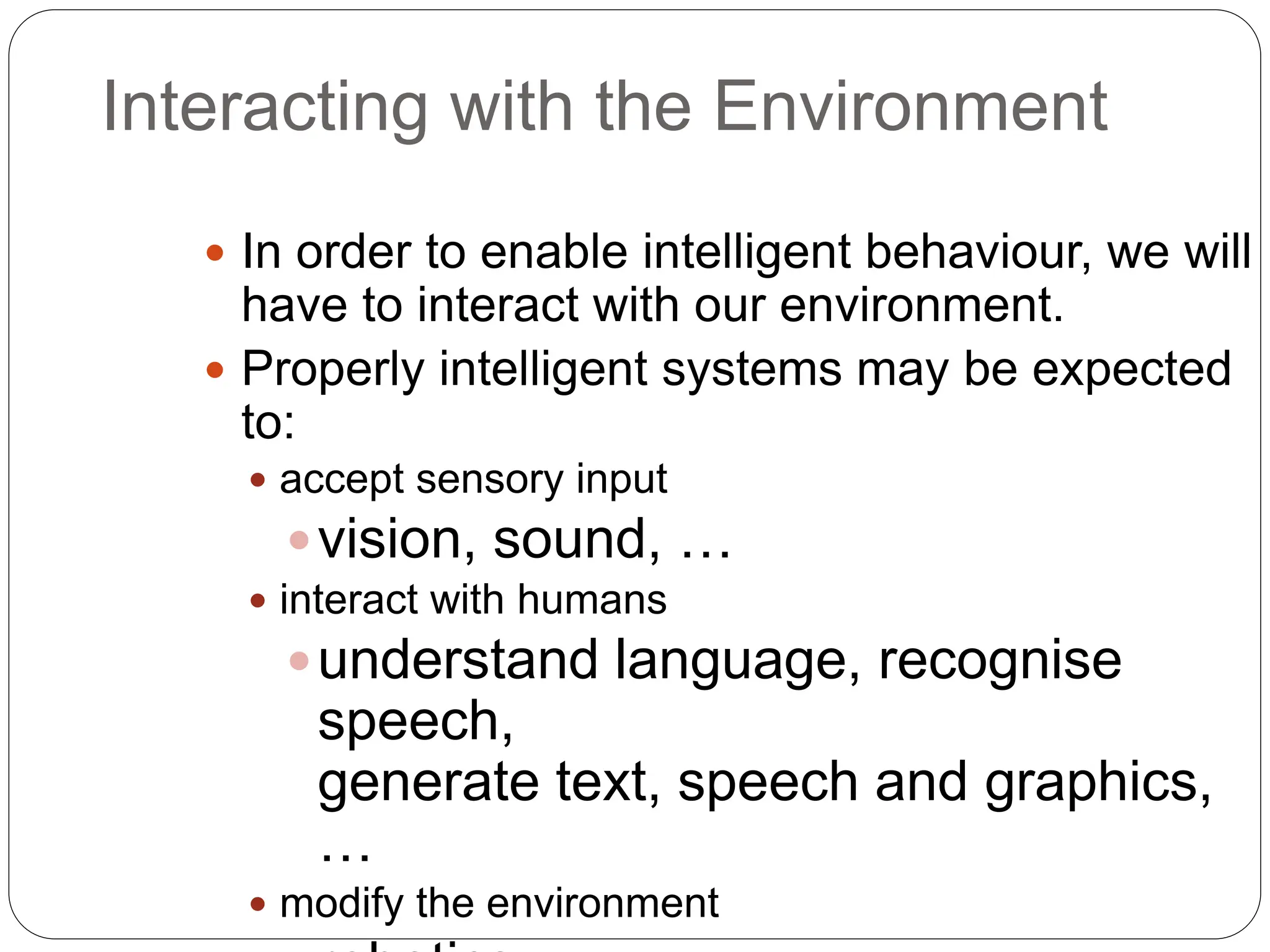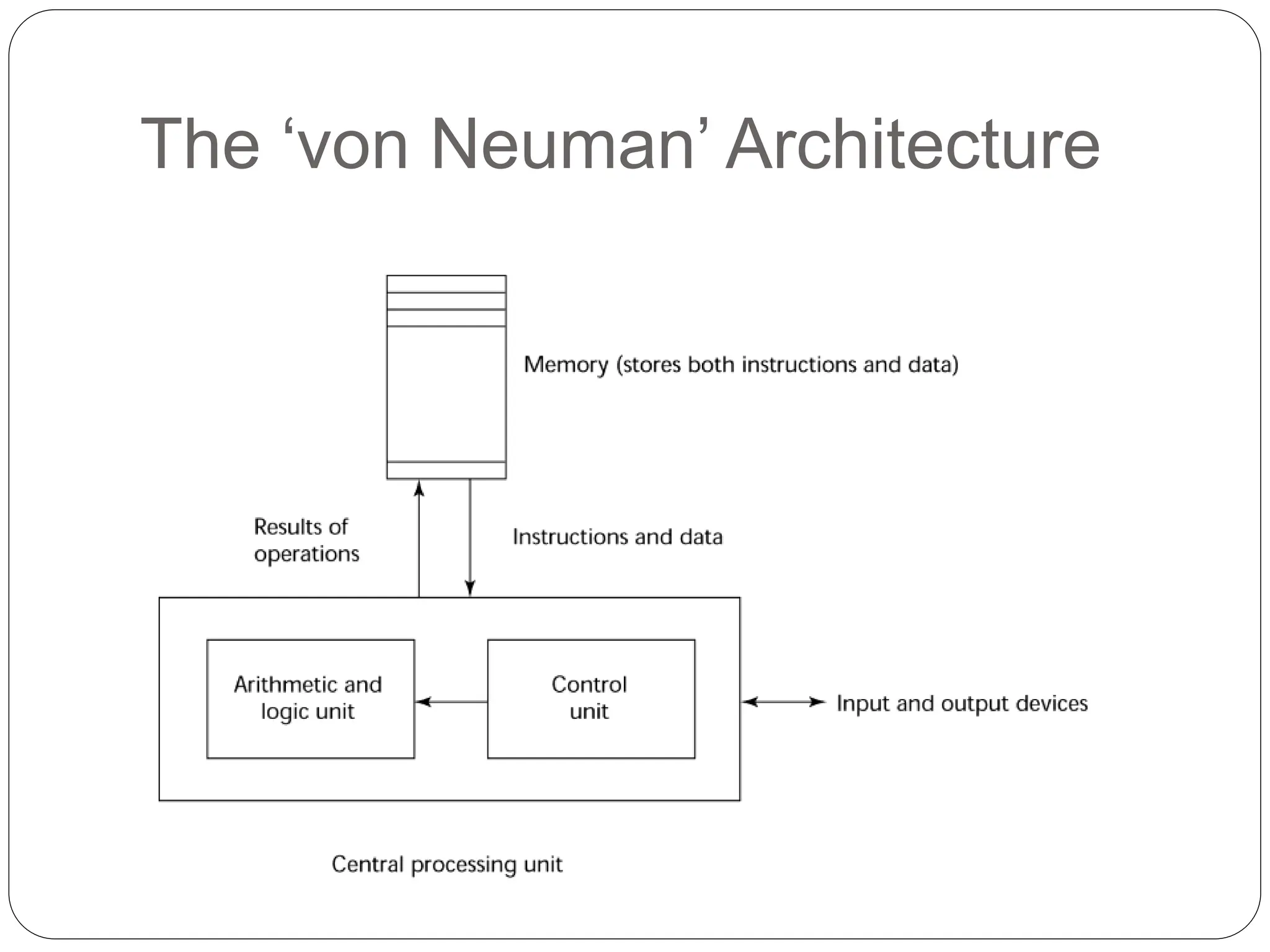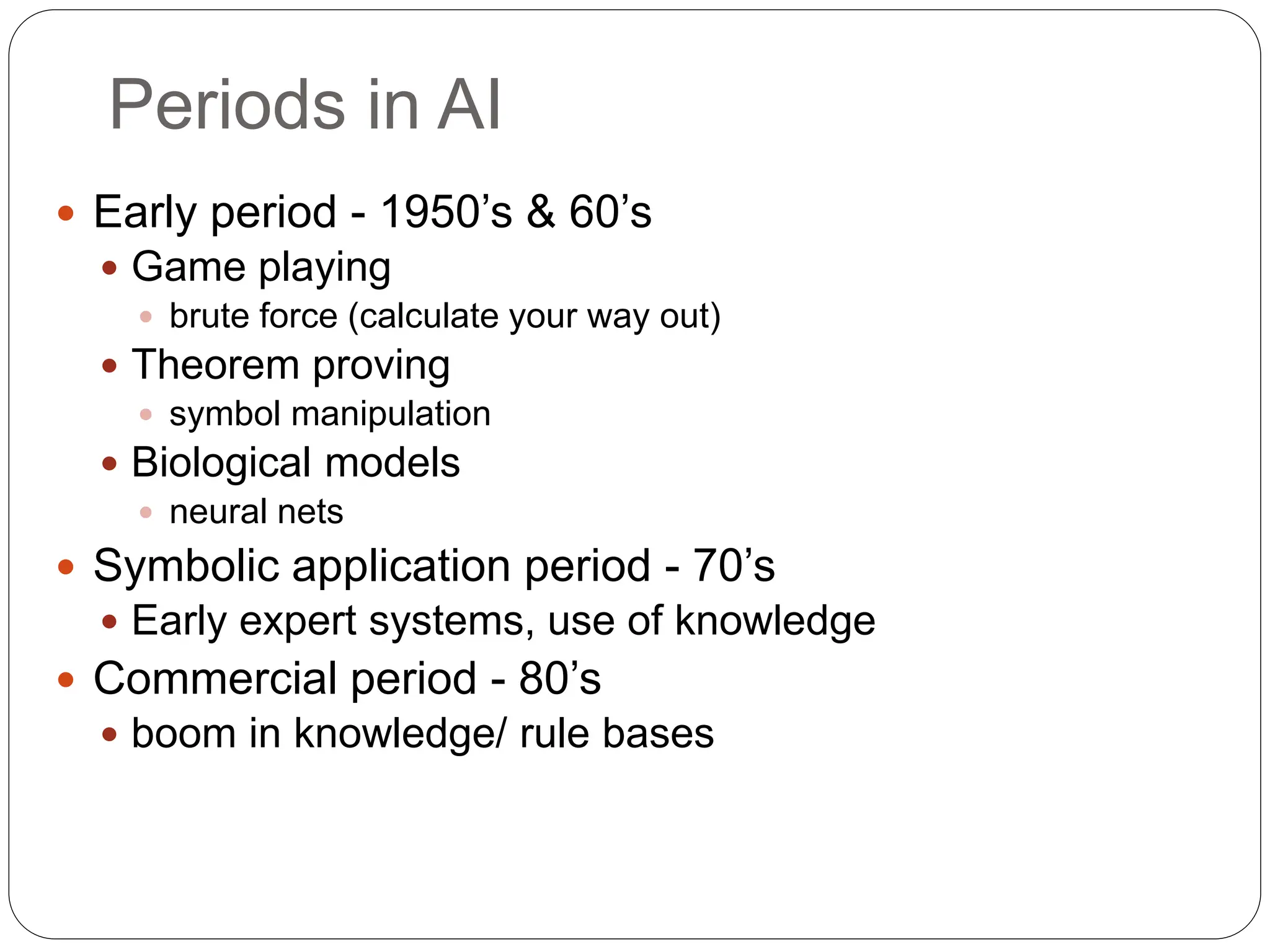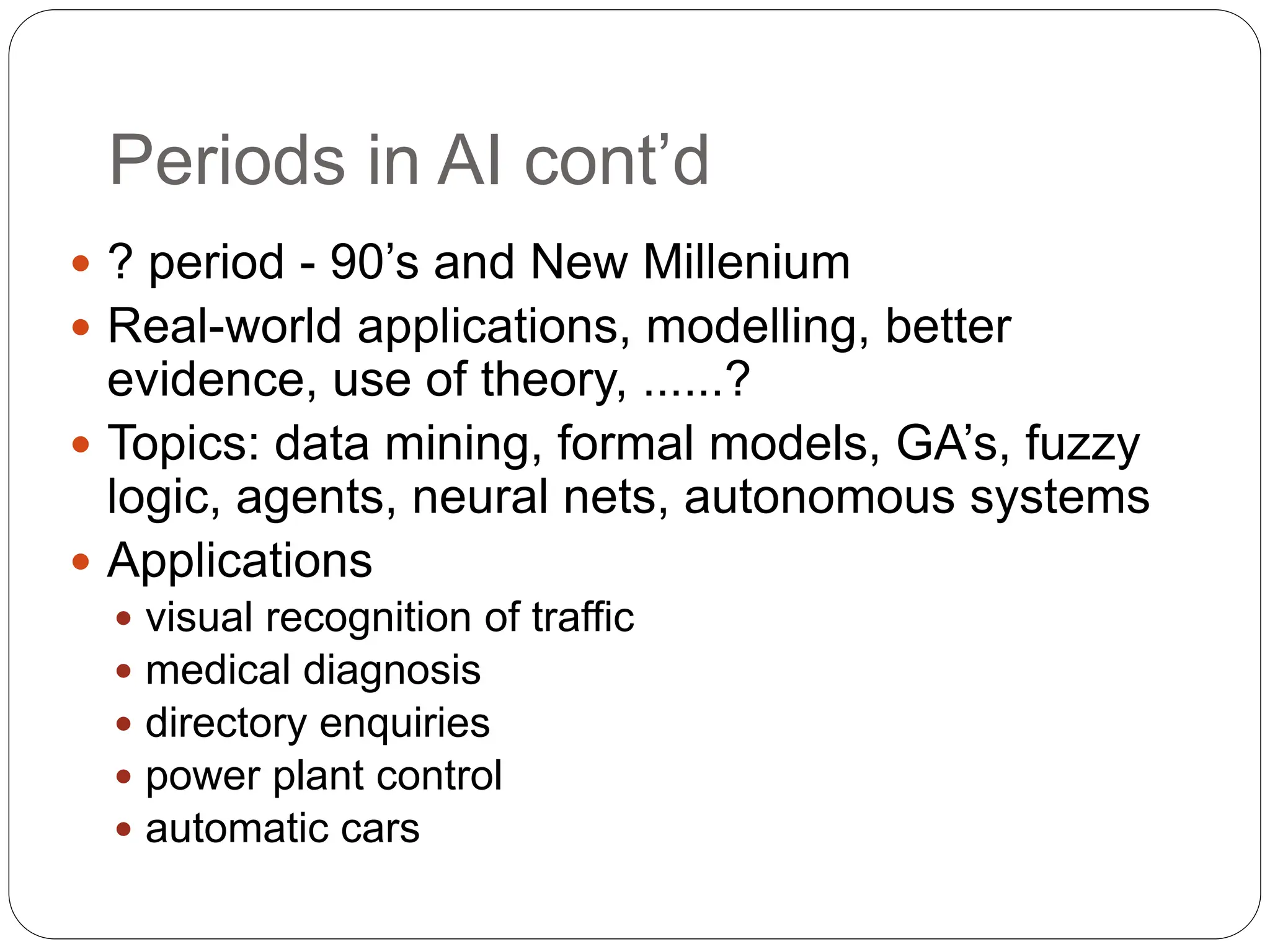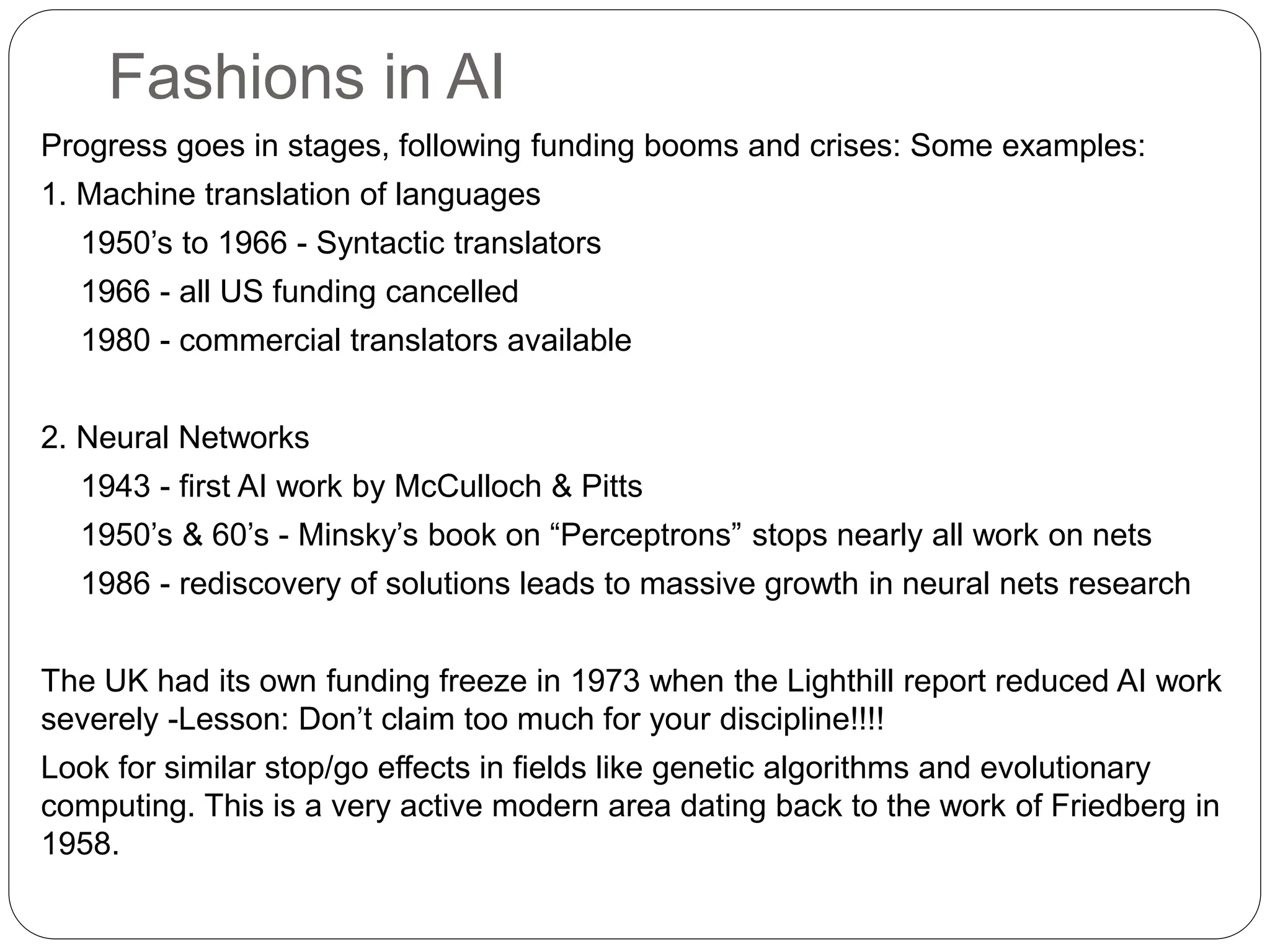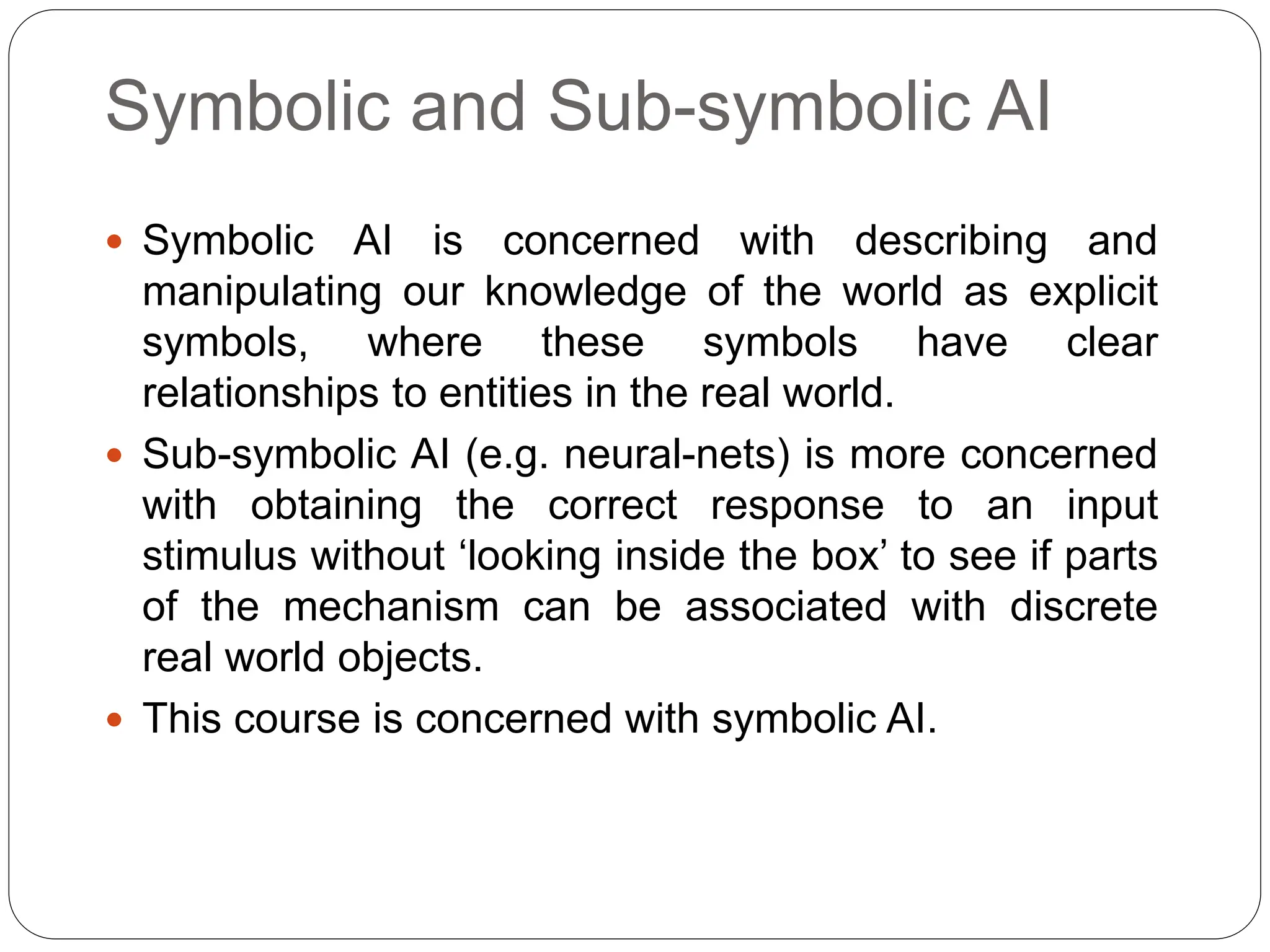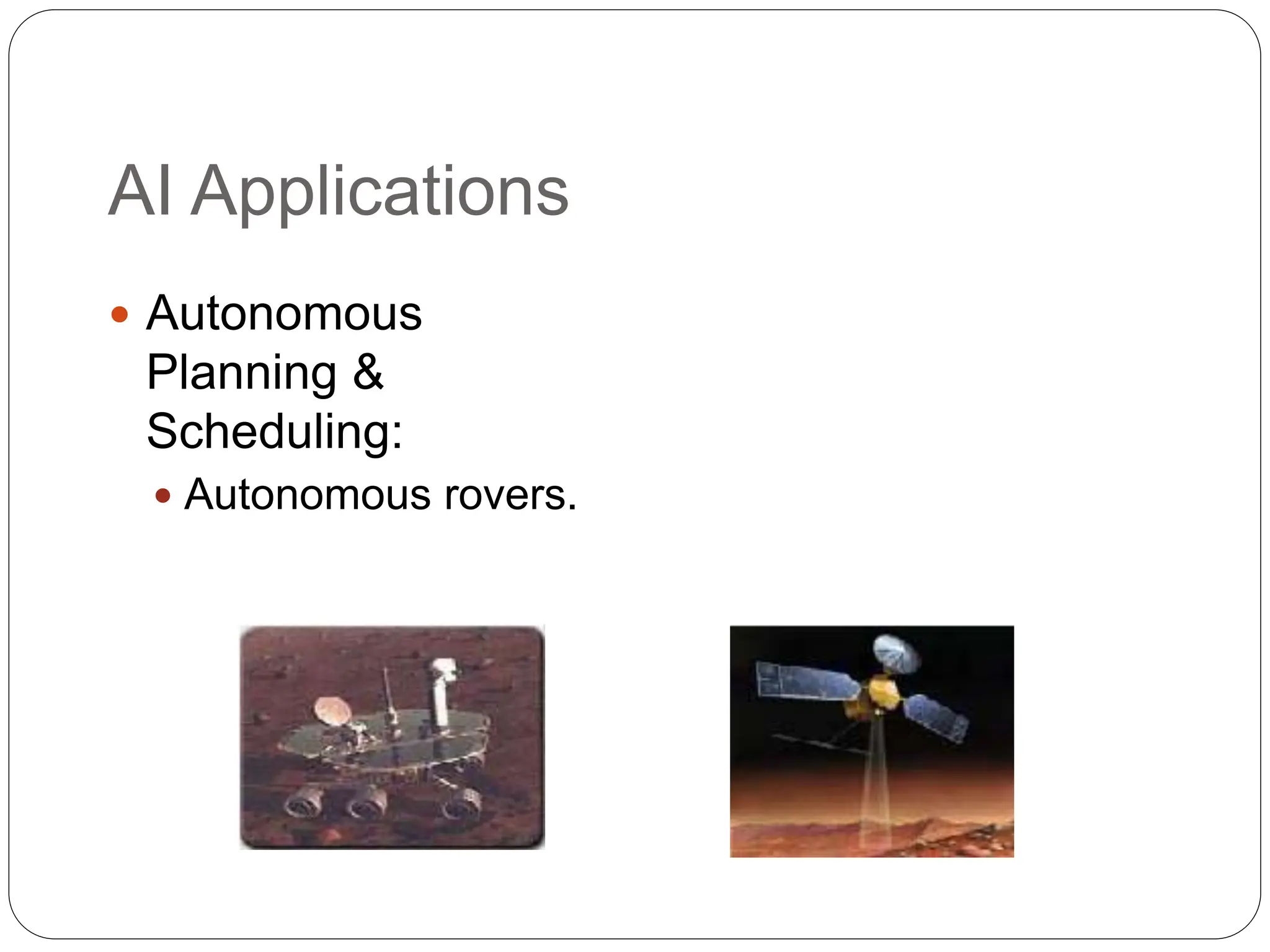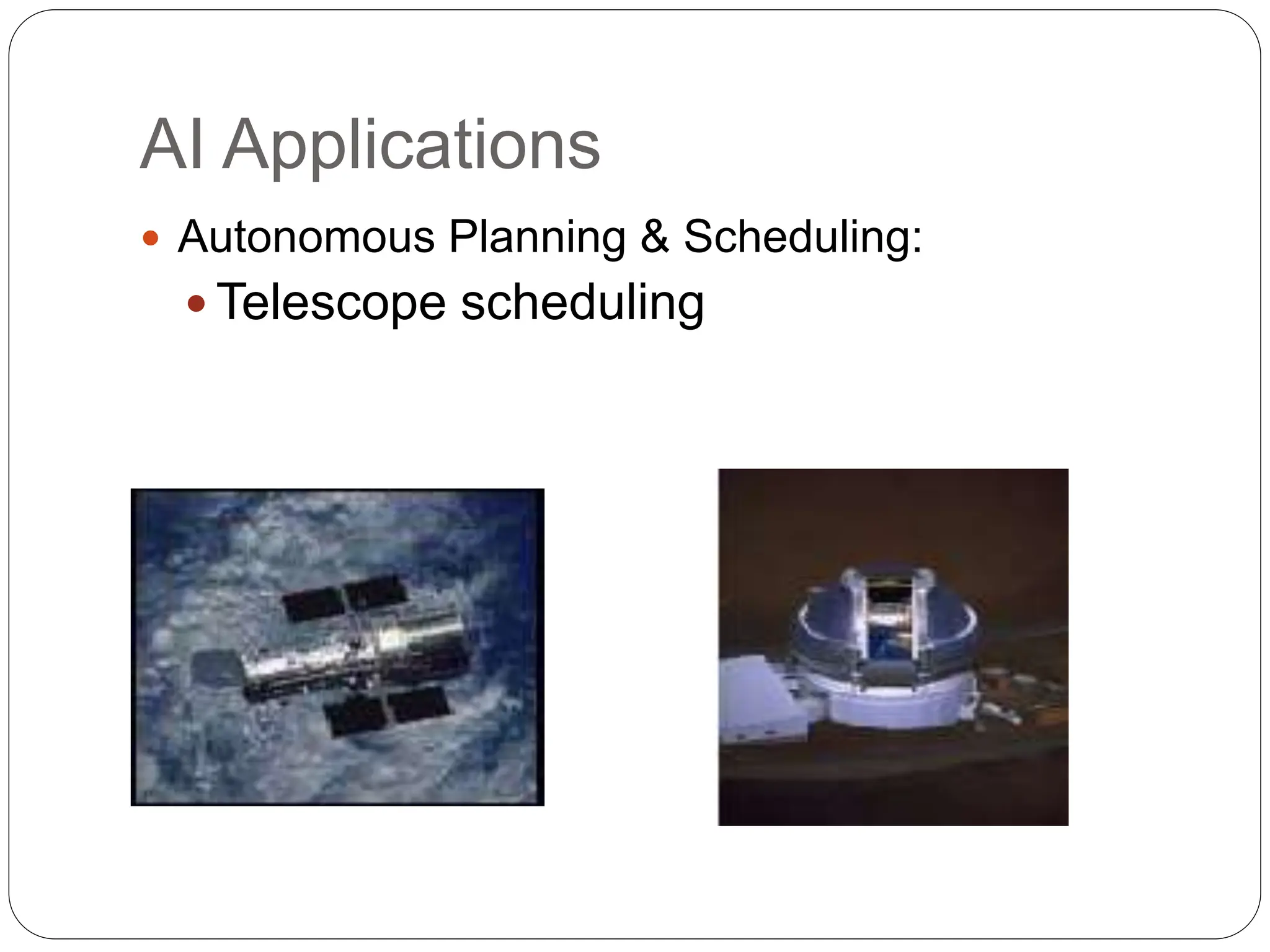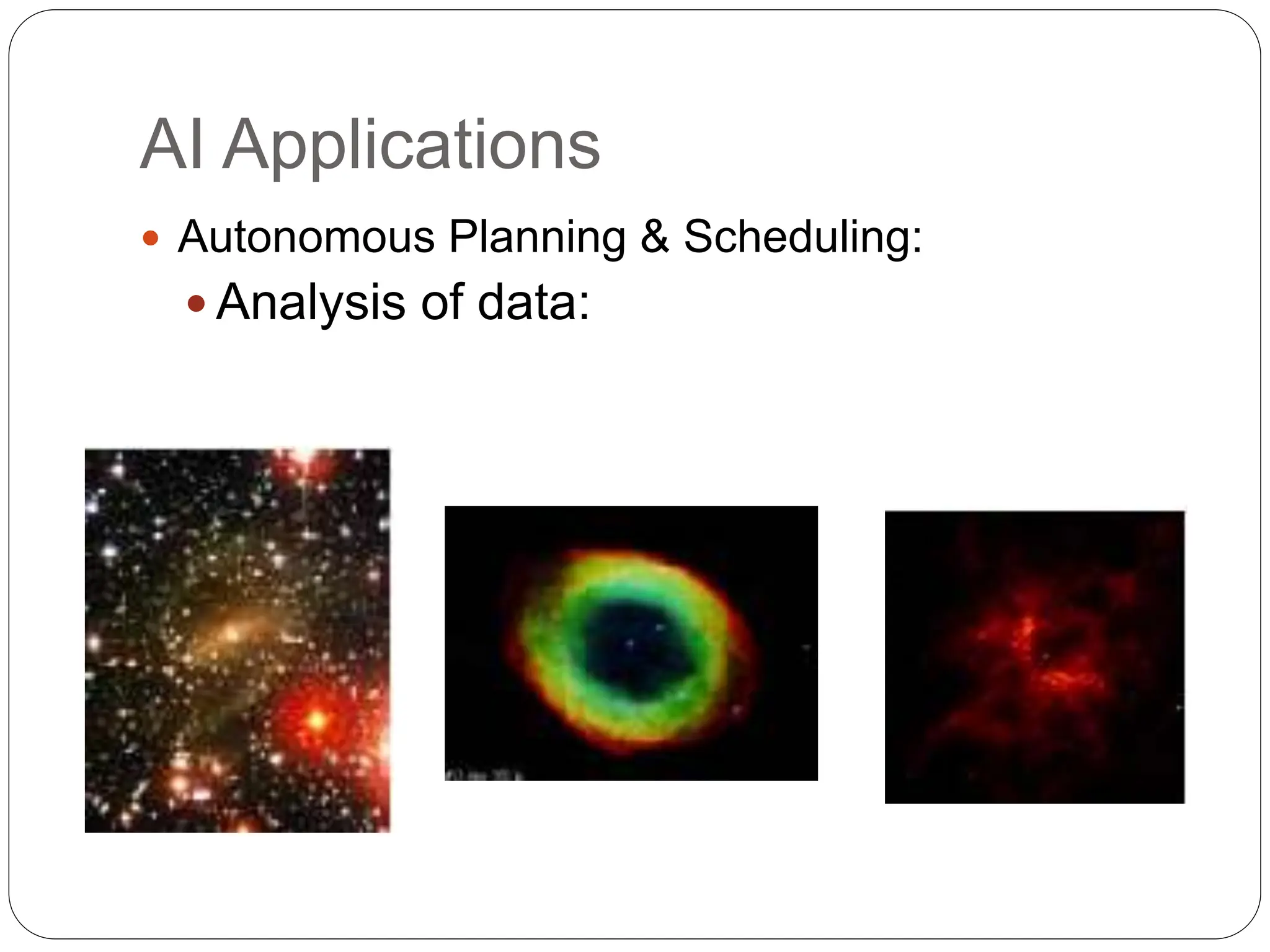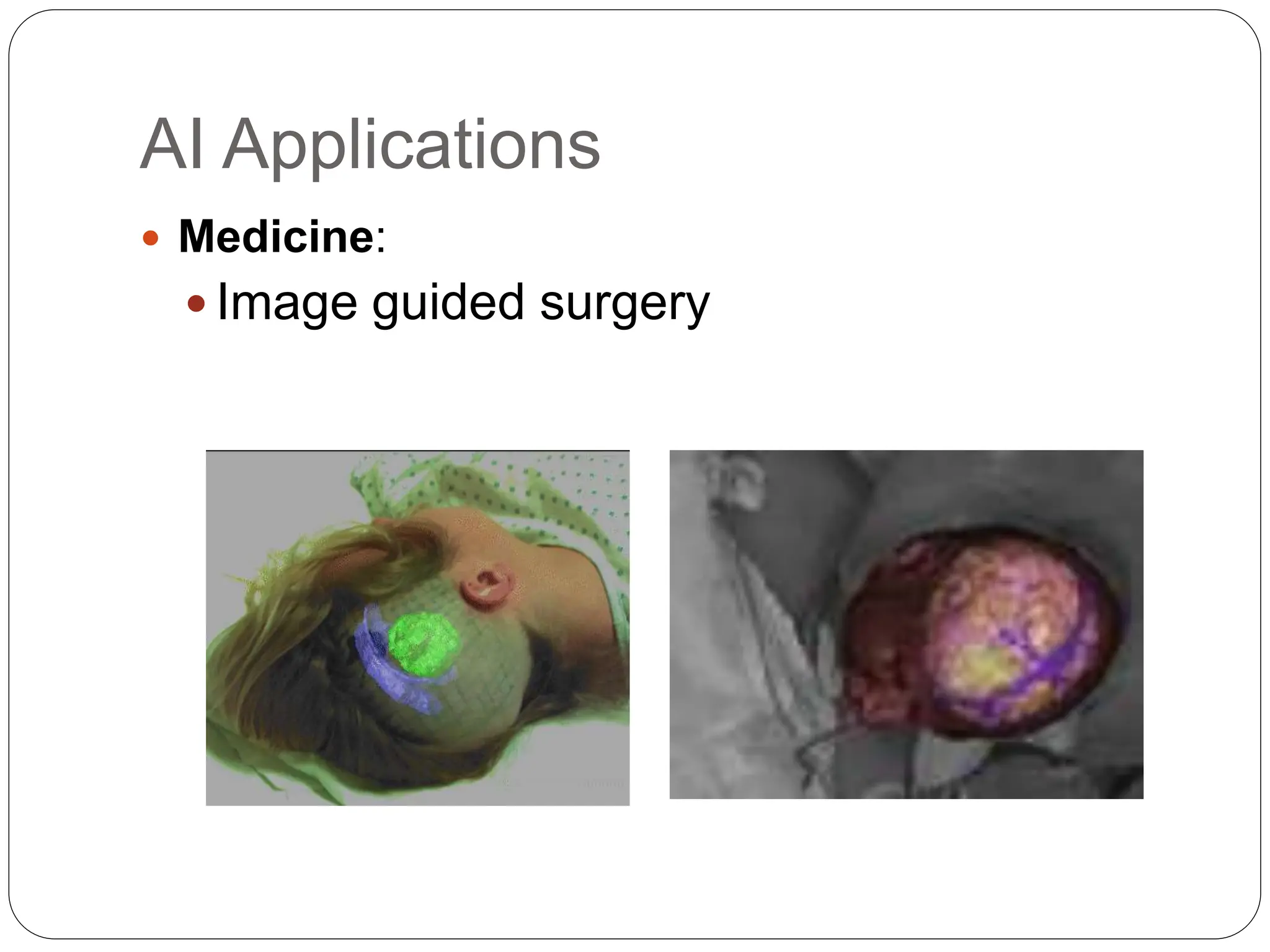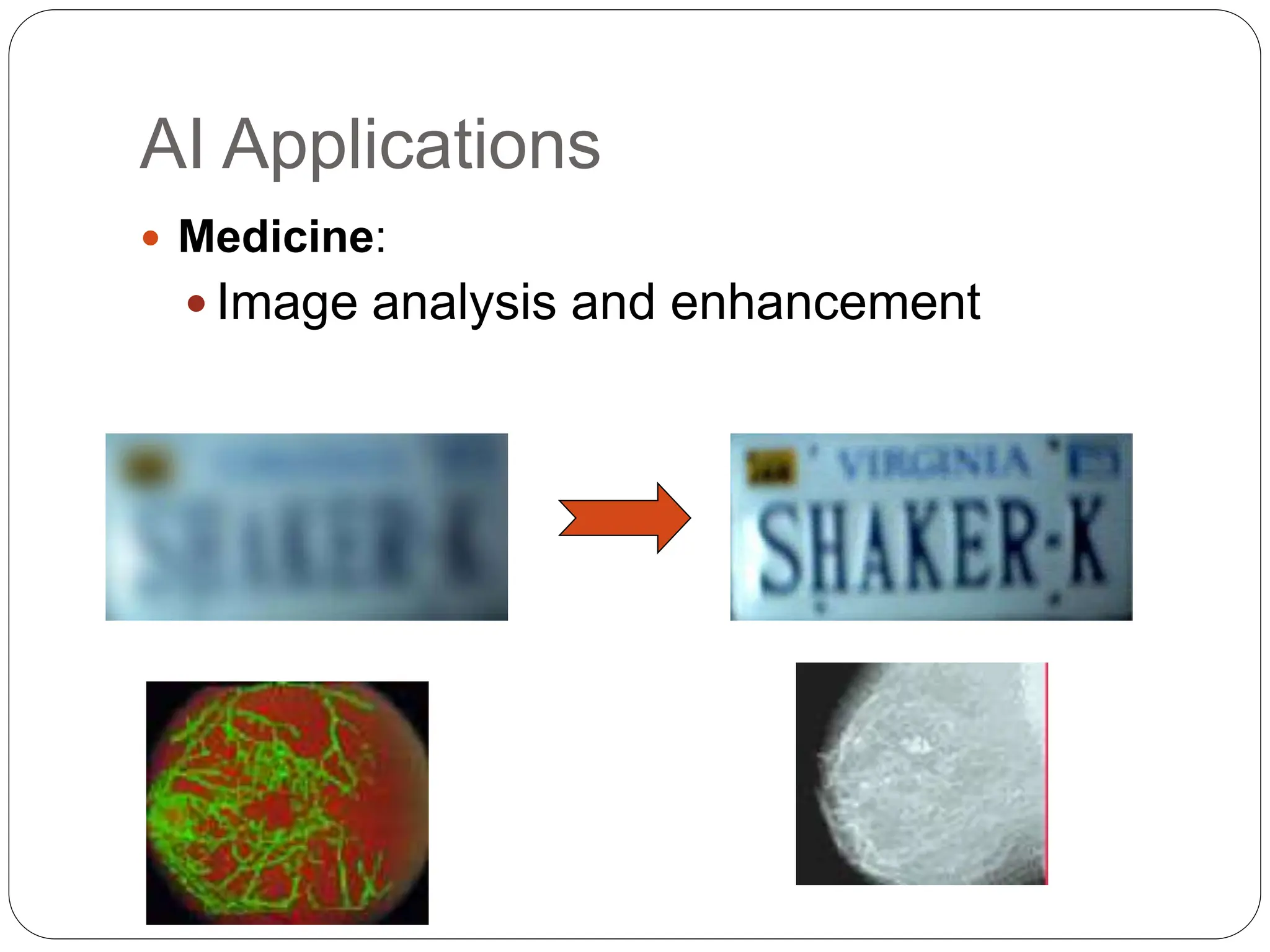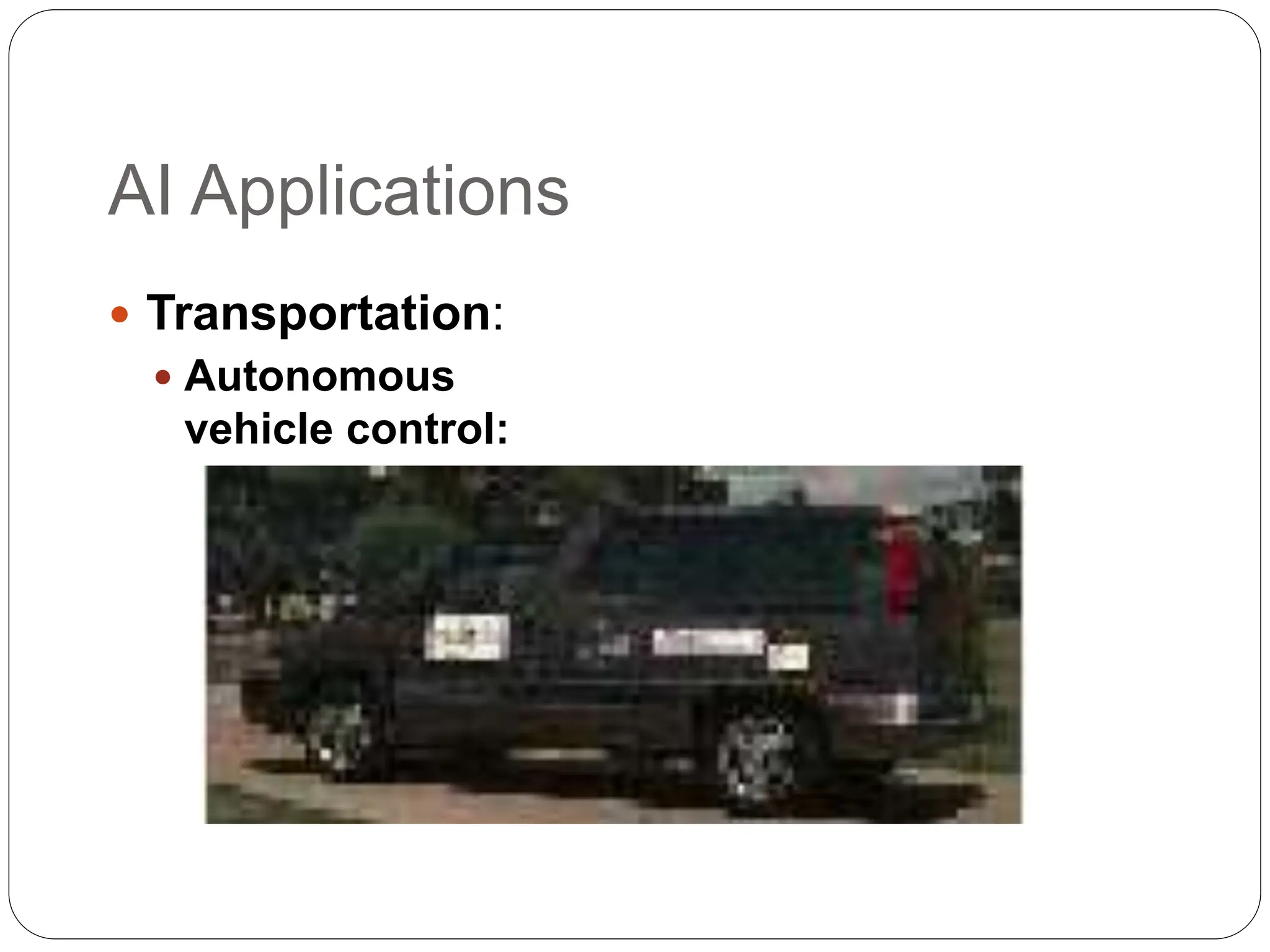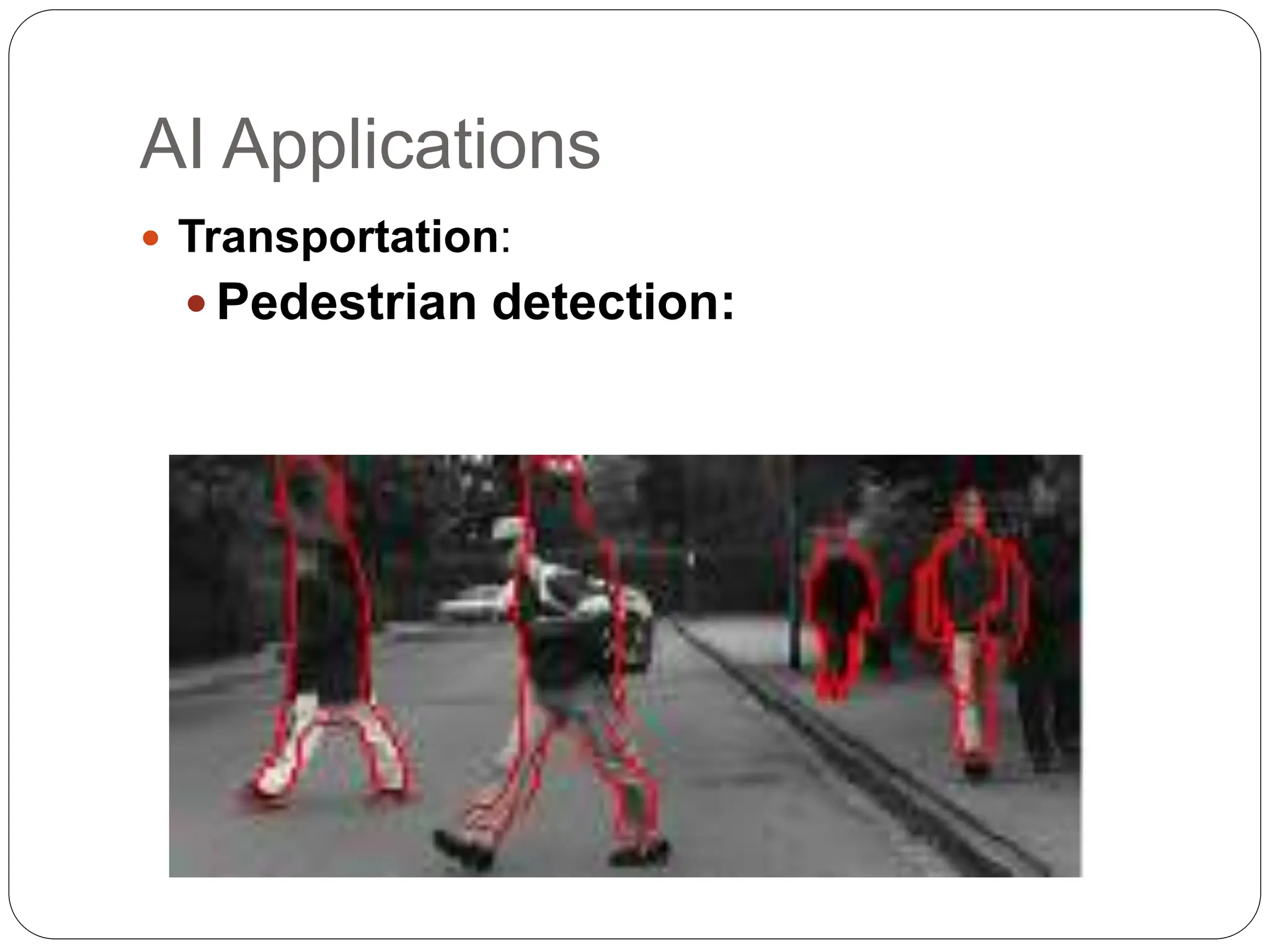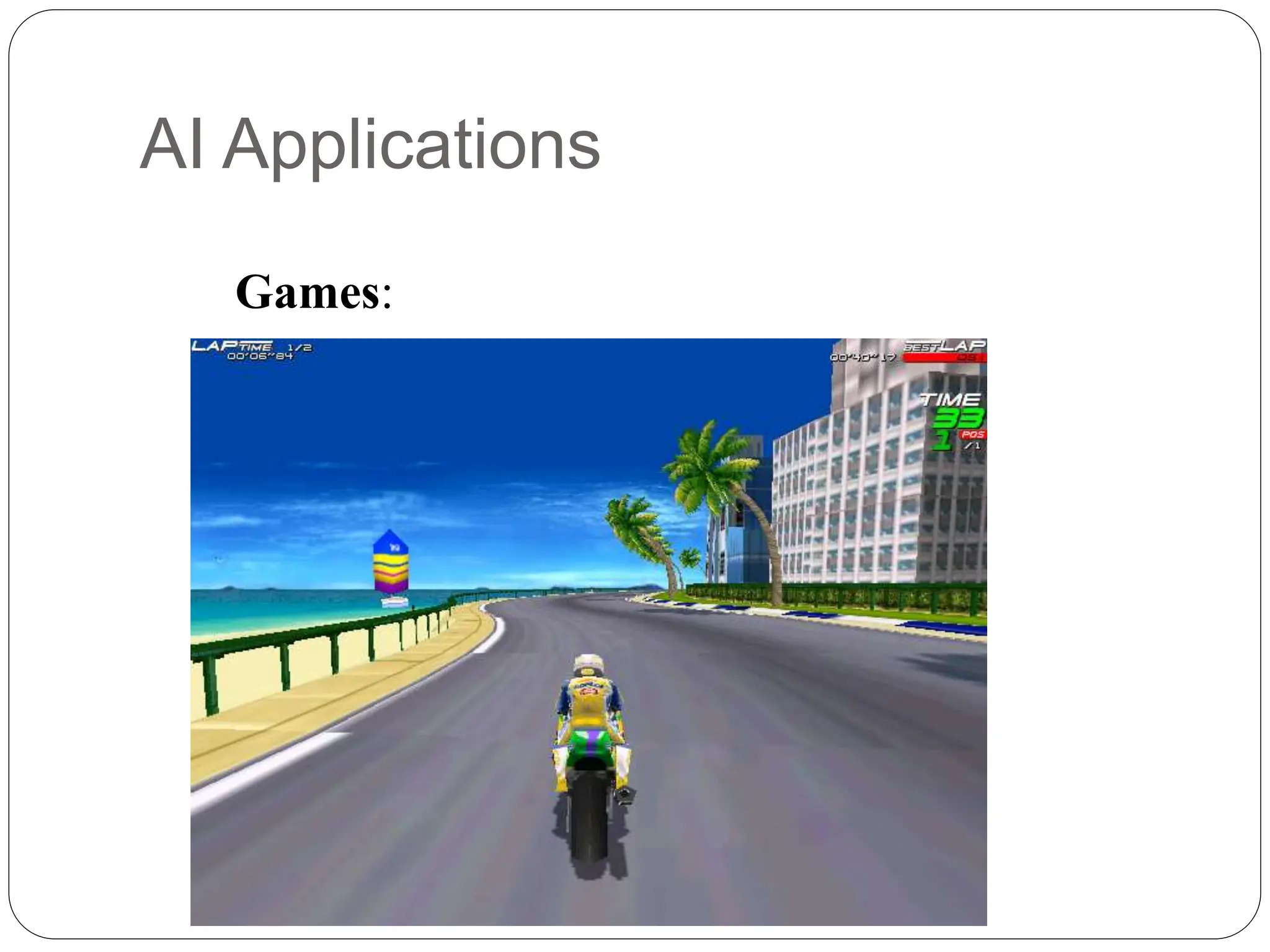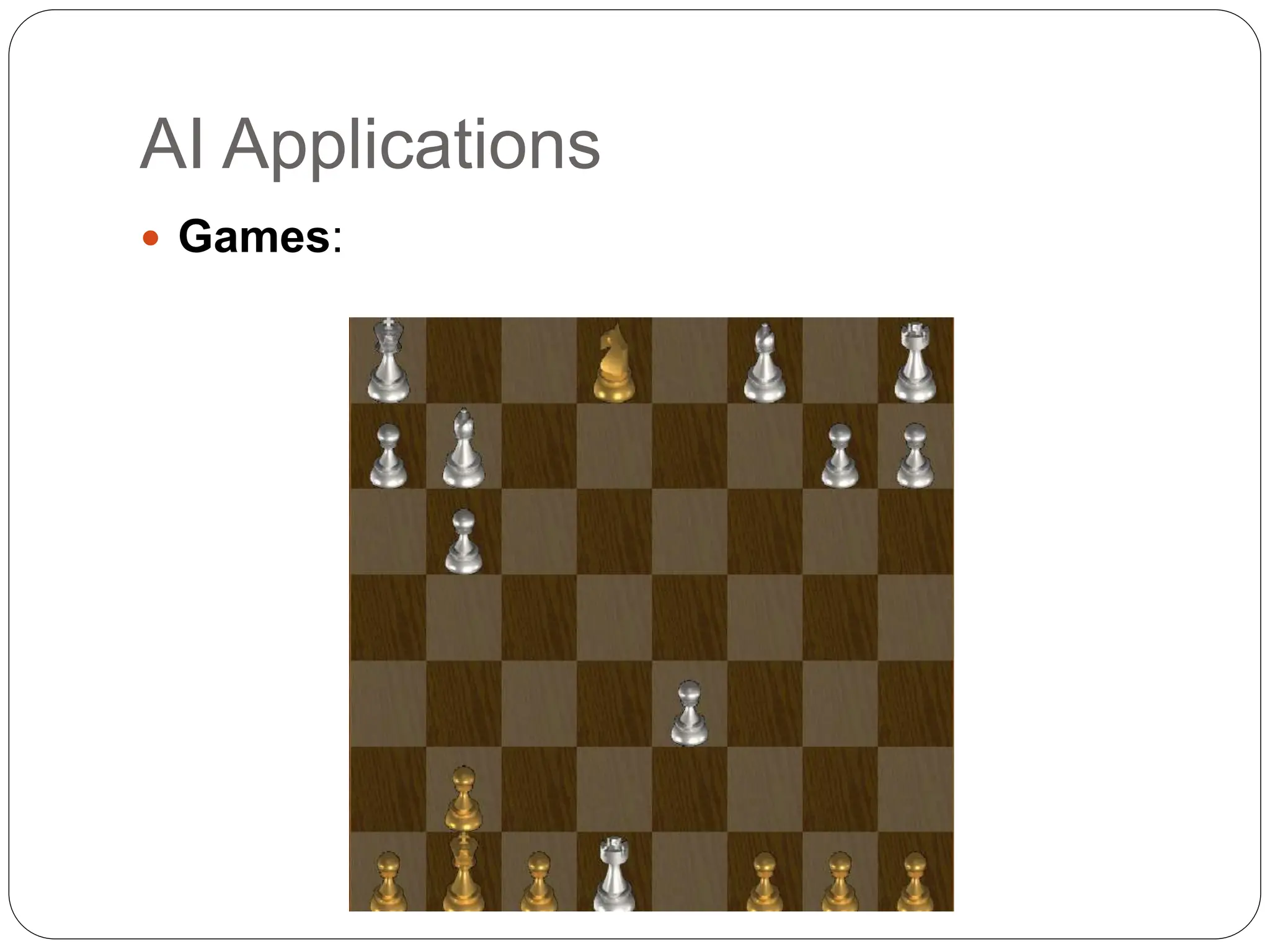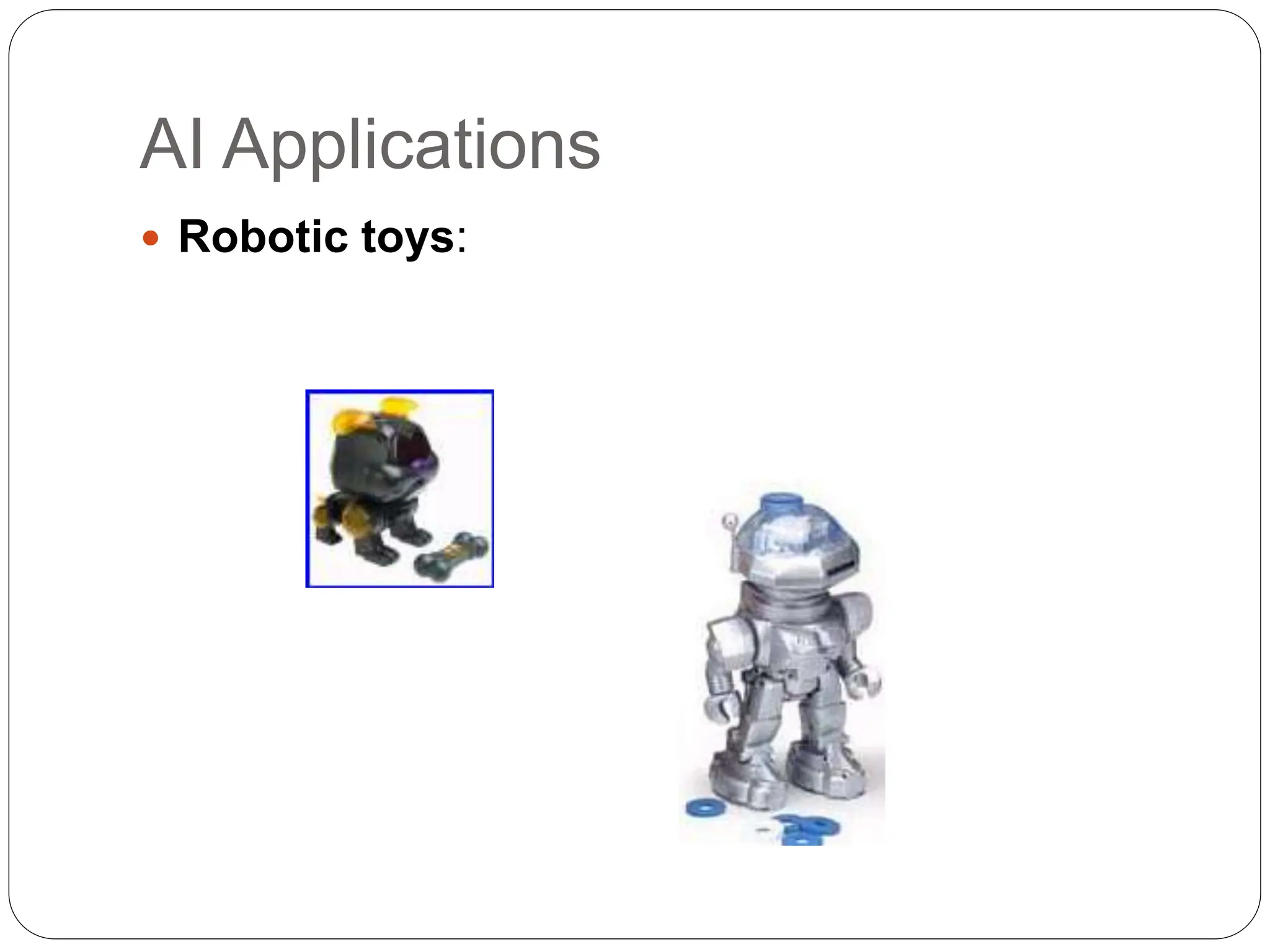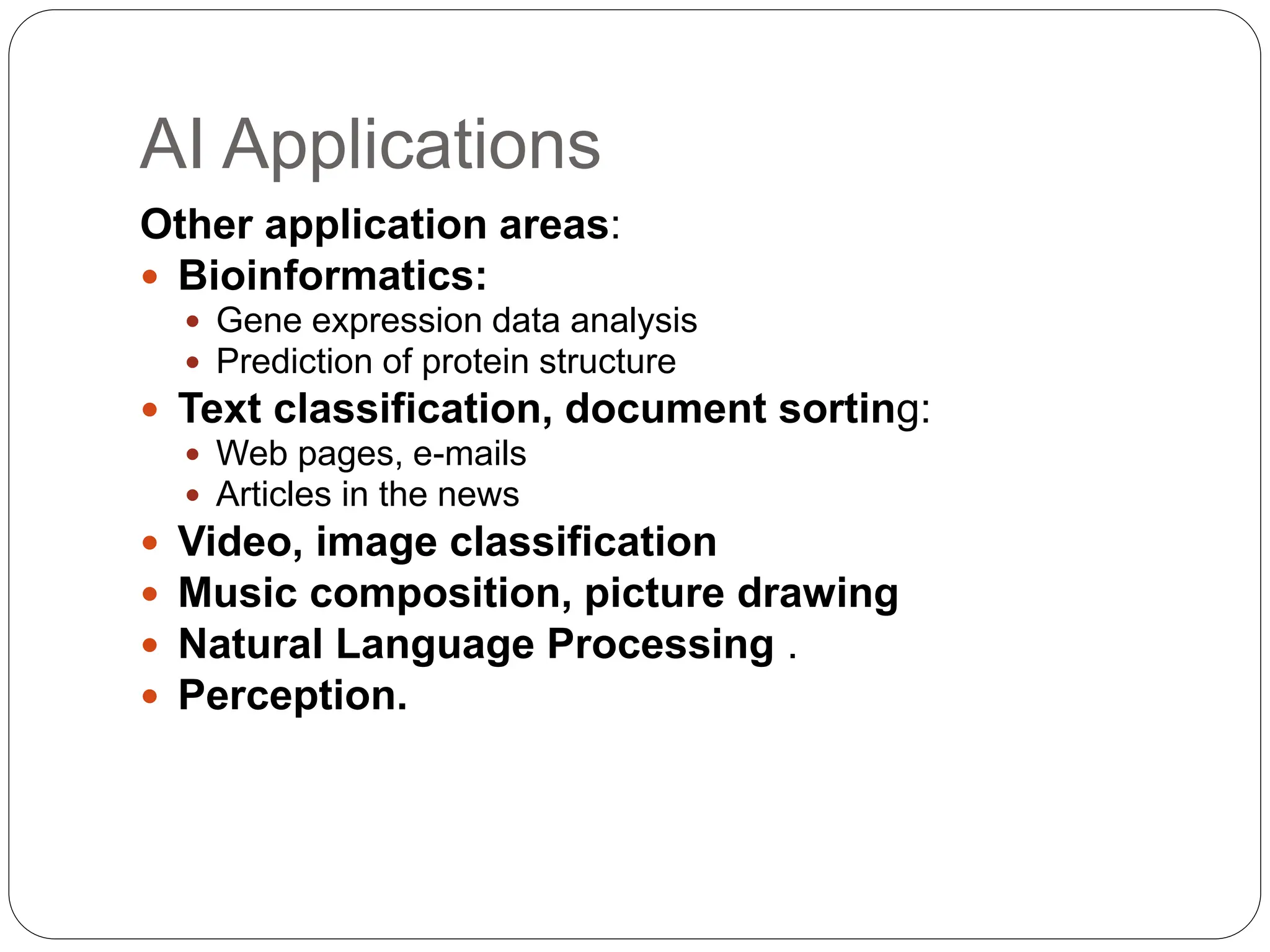The document provides guidance for attending lectures for an Artificial Intelligence course. It states that attendance is mandatory for all lectures, as the lecture notes alone do not provide enough detail and examples to fully understand the material. Students are responsible for attending lectures and taking supplemental notes. They are also expected to do additional reading to further supplement the lecture content. Students should ask questions during or after lectures if anything is unclear or being covered too quickly.
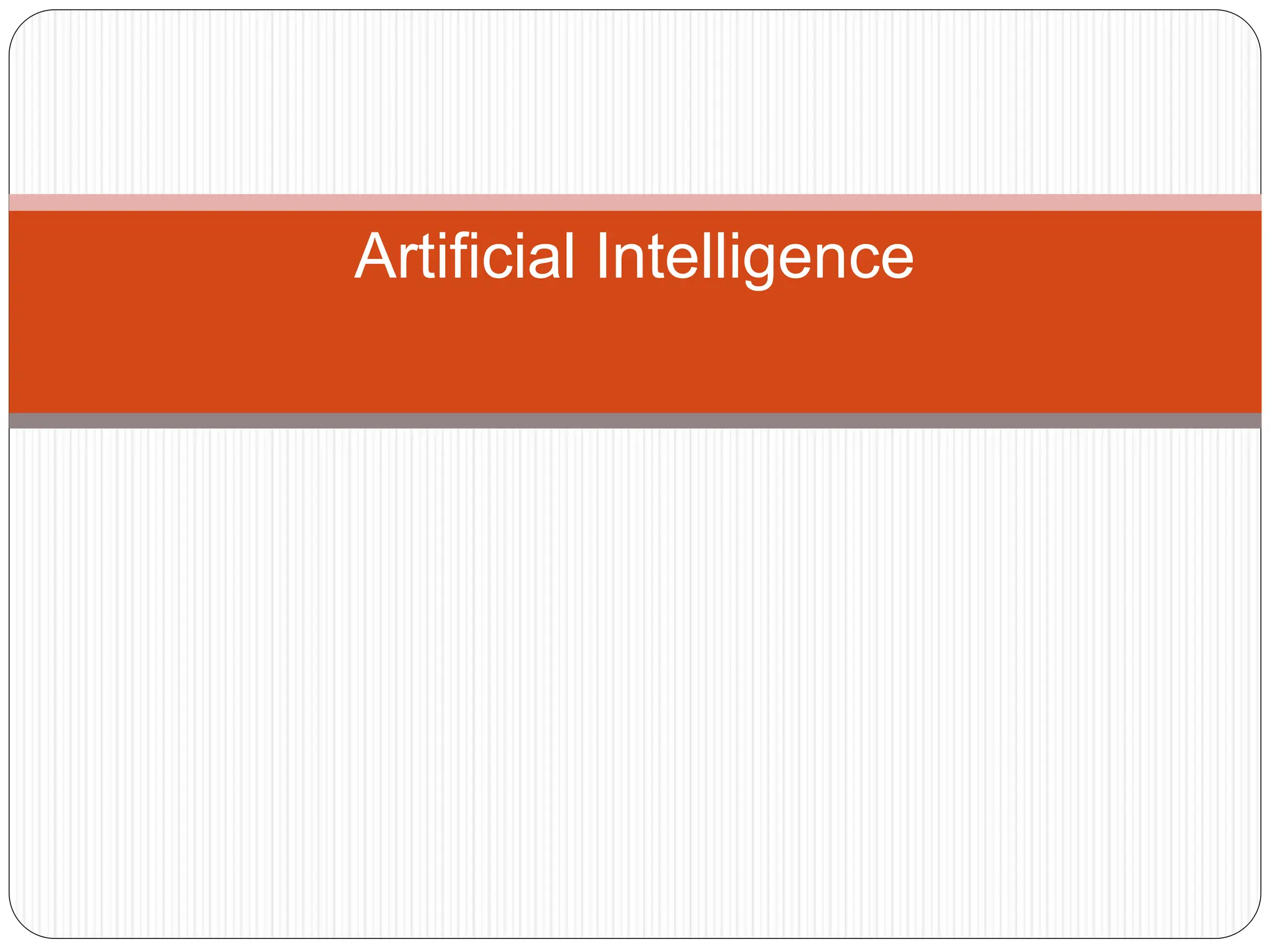
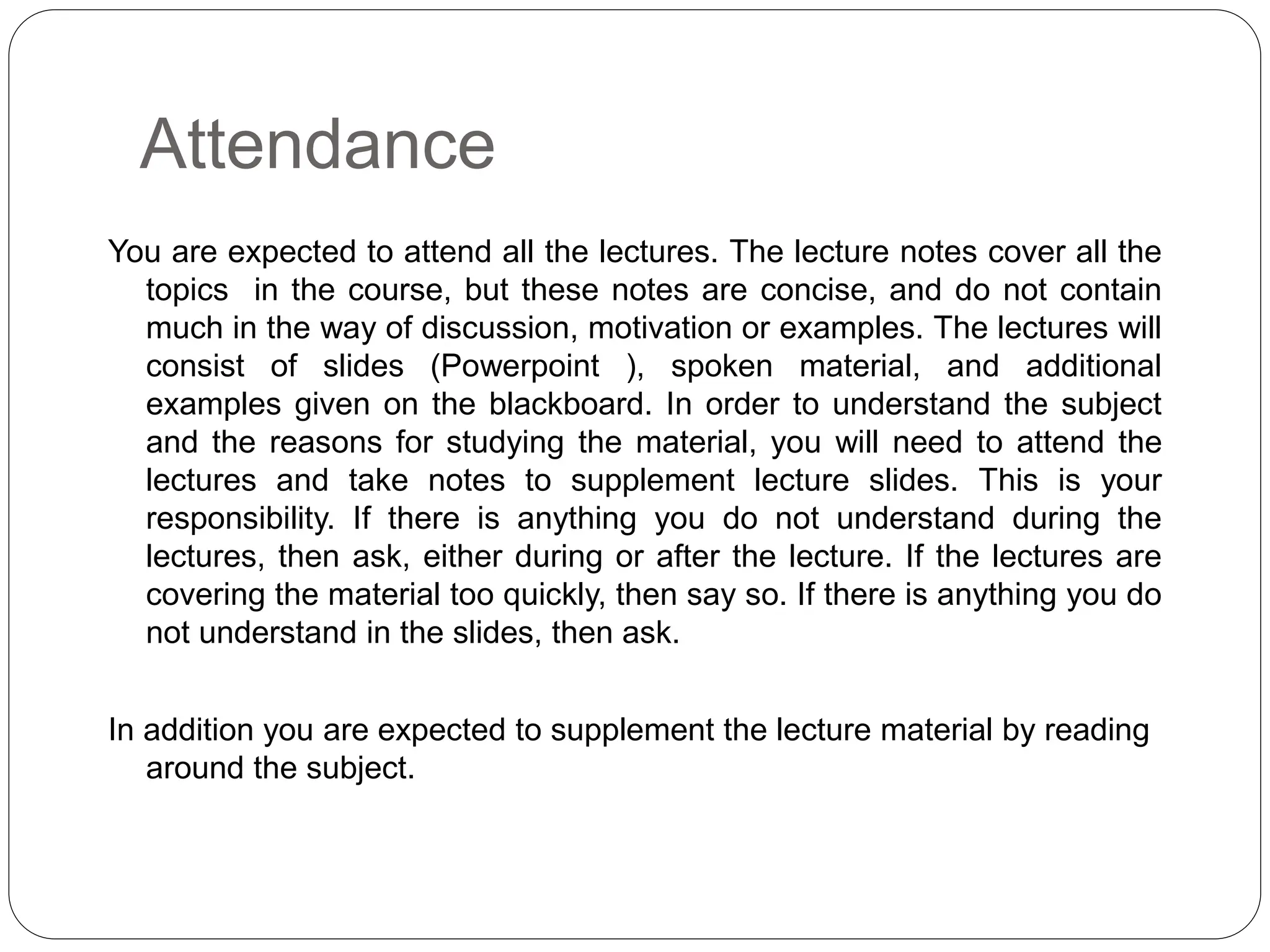


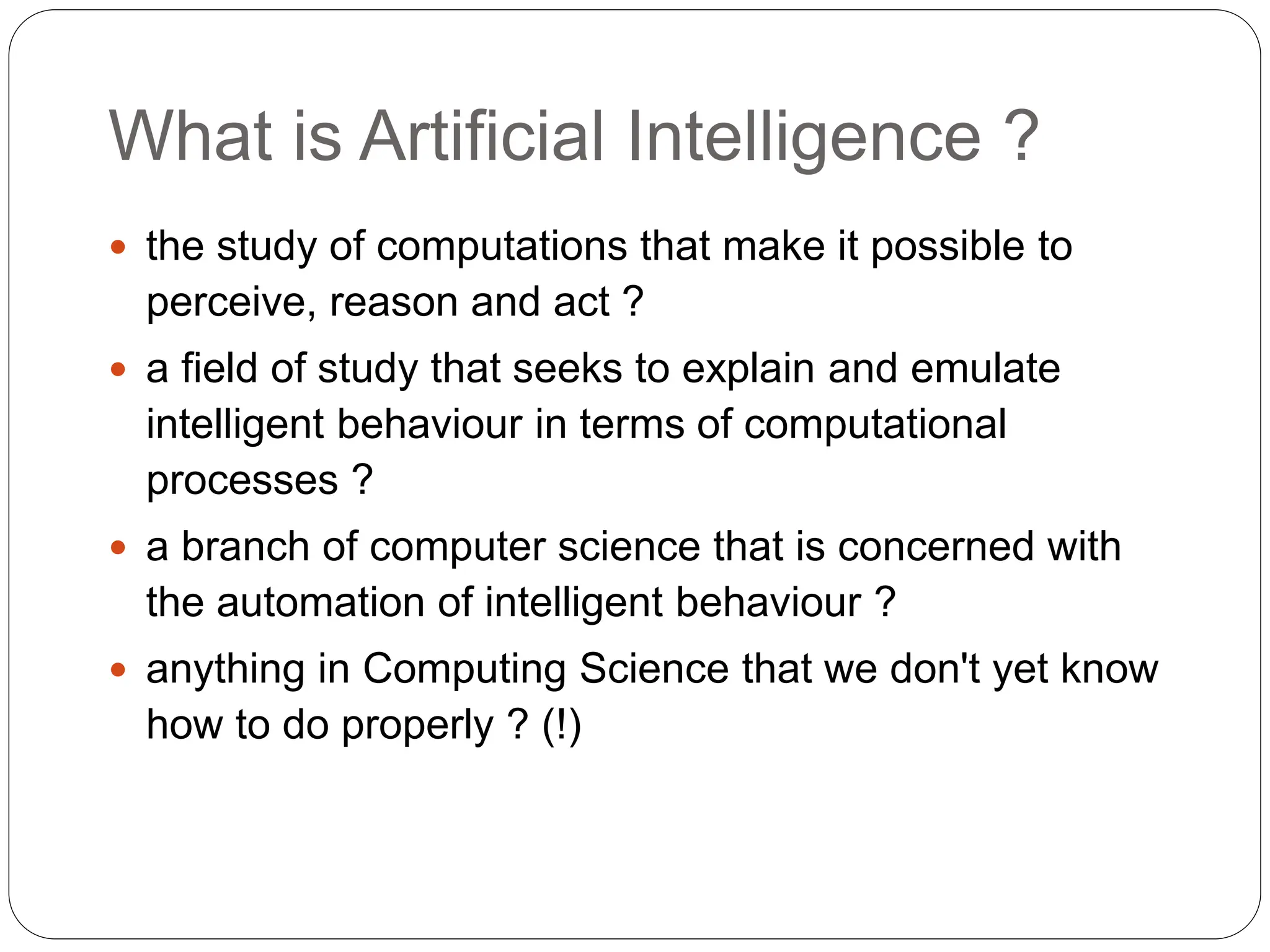
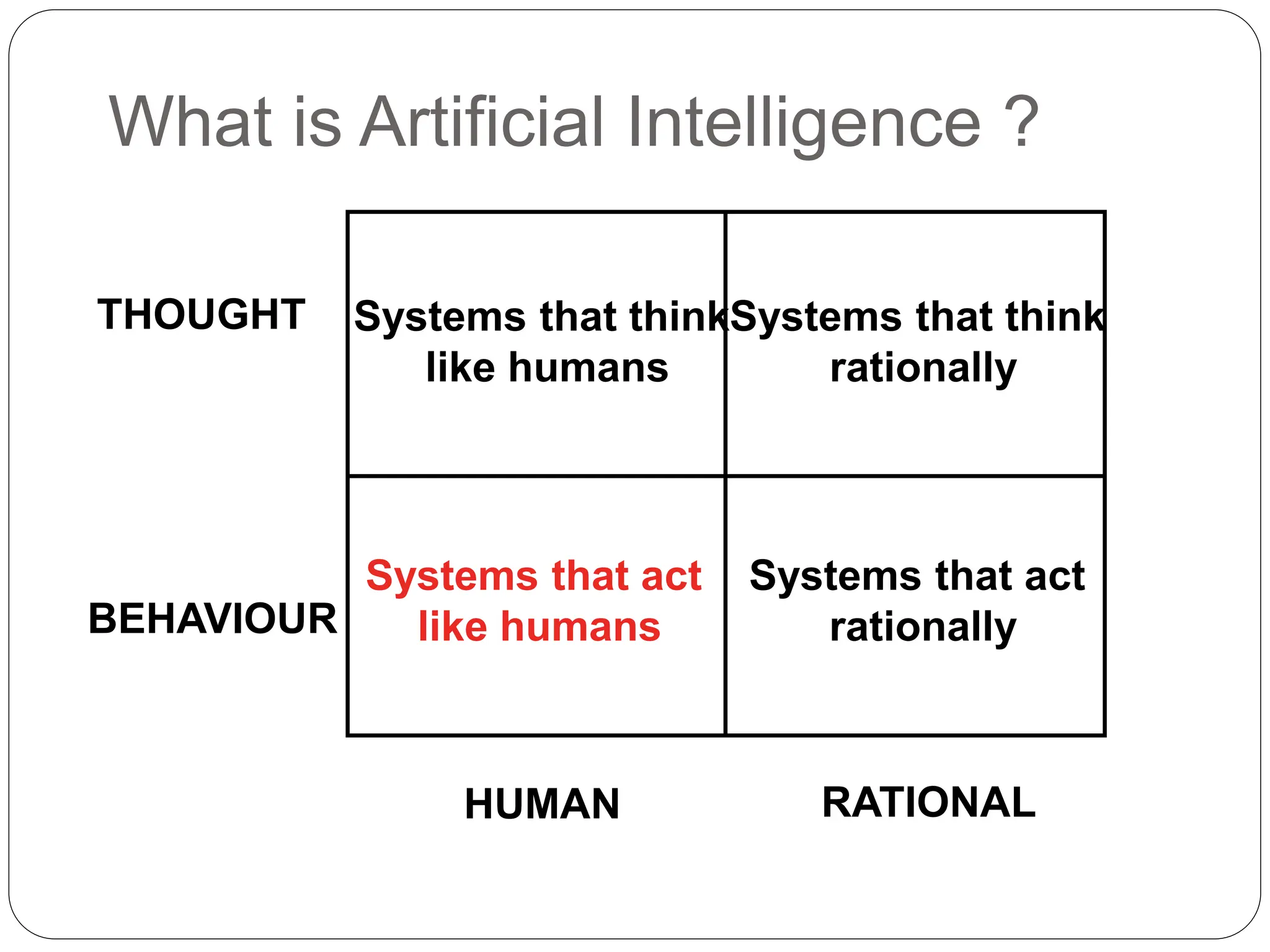
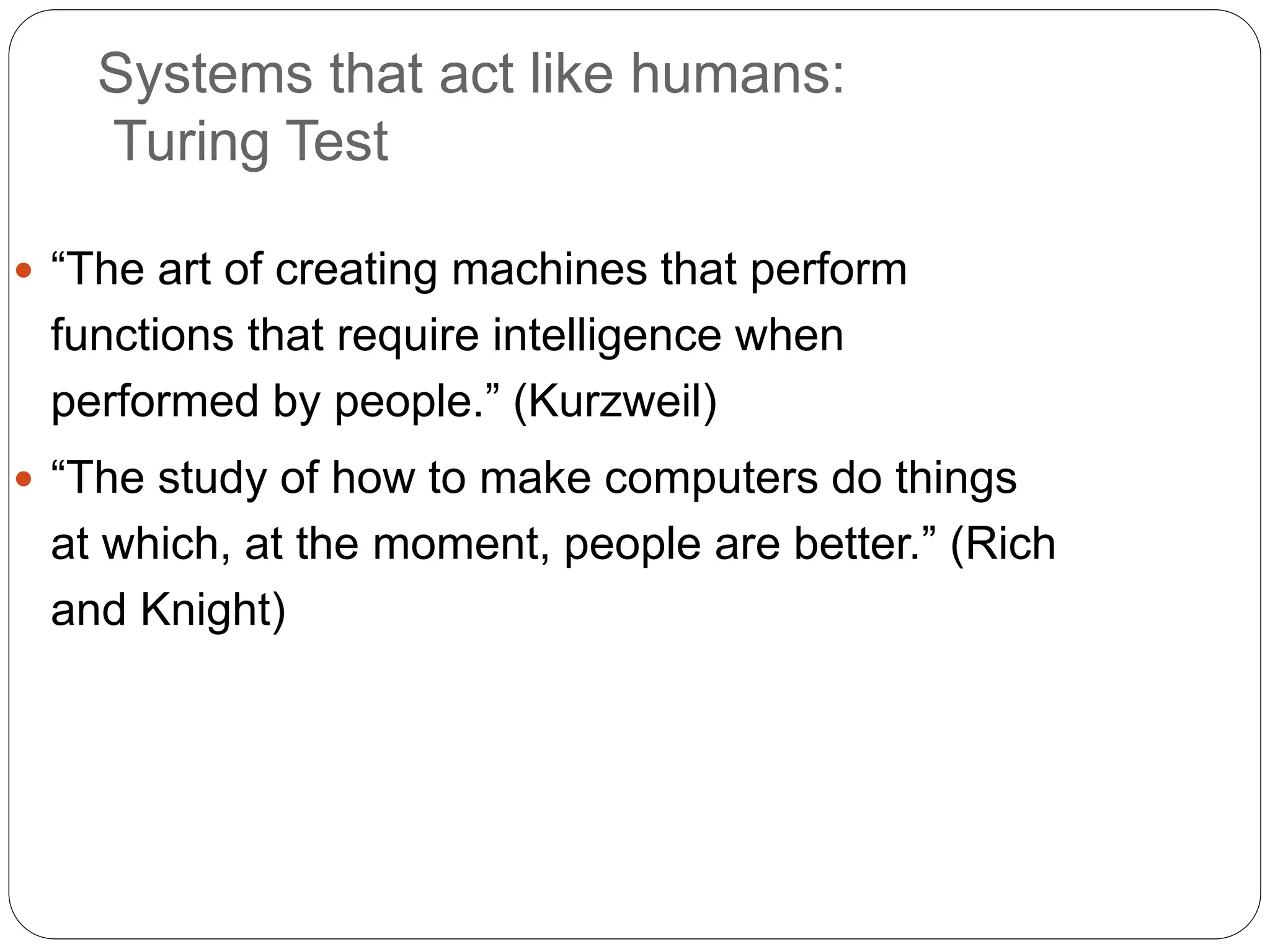


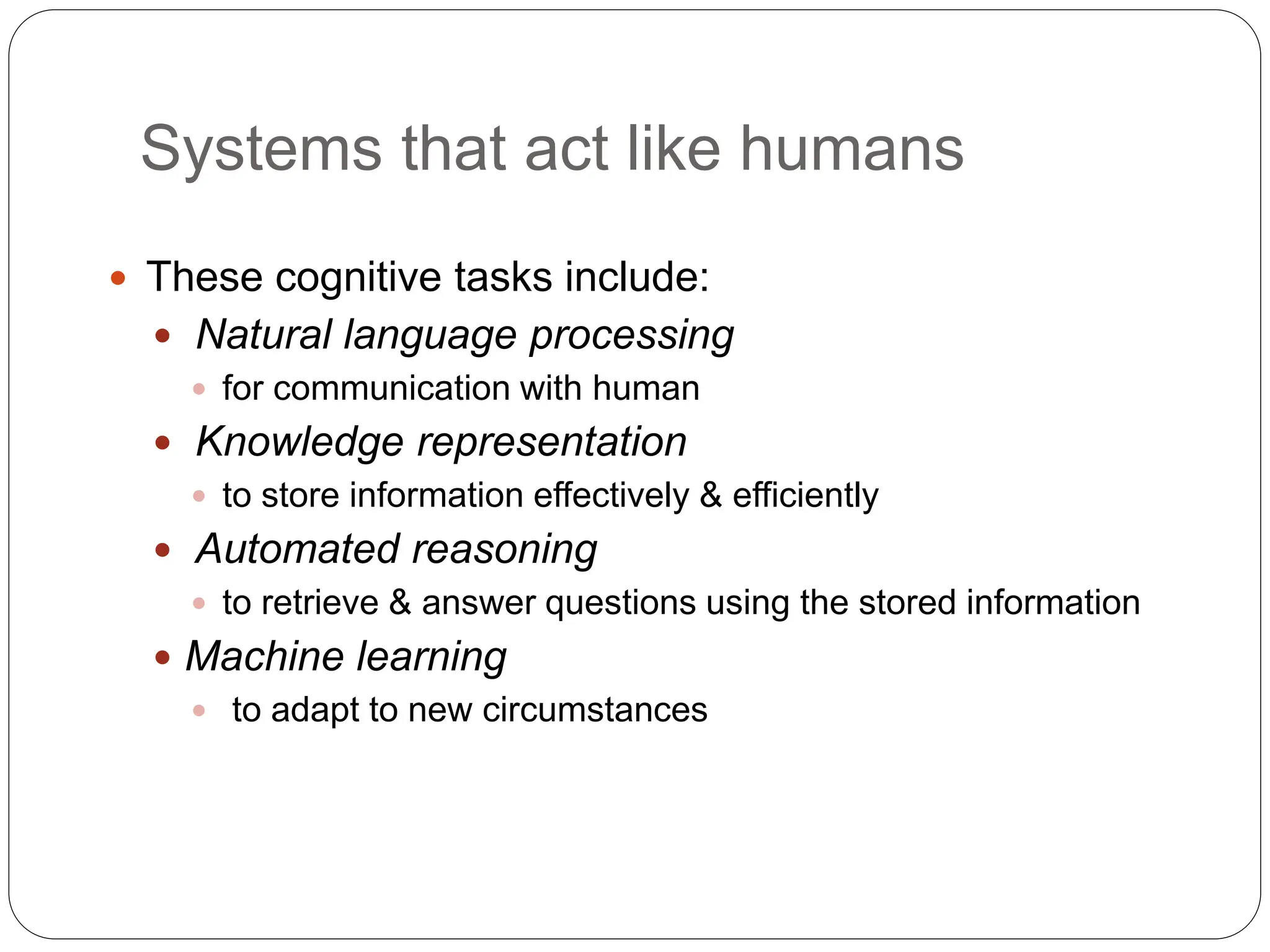


![Systems that think like humans:
cognitive modeling
Humans as observed from ‘inside’
How do we know how humans think?
Introspection vs. psychological experiments
Cognitive Science
“The exciting new effort to make computers
think … machines with minds in the full and
literal sense” (Haugeland)
“[The automation of] activities that we
associate with human thinking, activities such
as decision-making, problem solving, learning
…” (Bellman)](https://image.slidesharecdn.com/901470chap1-240330135046-867ef03a/75/901470_Chap1-ppt-artificial-intelligence-13-2048.jpg)
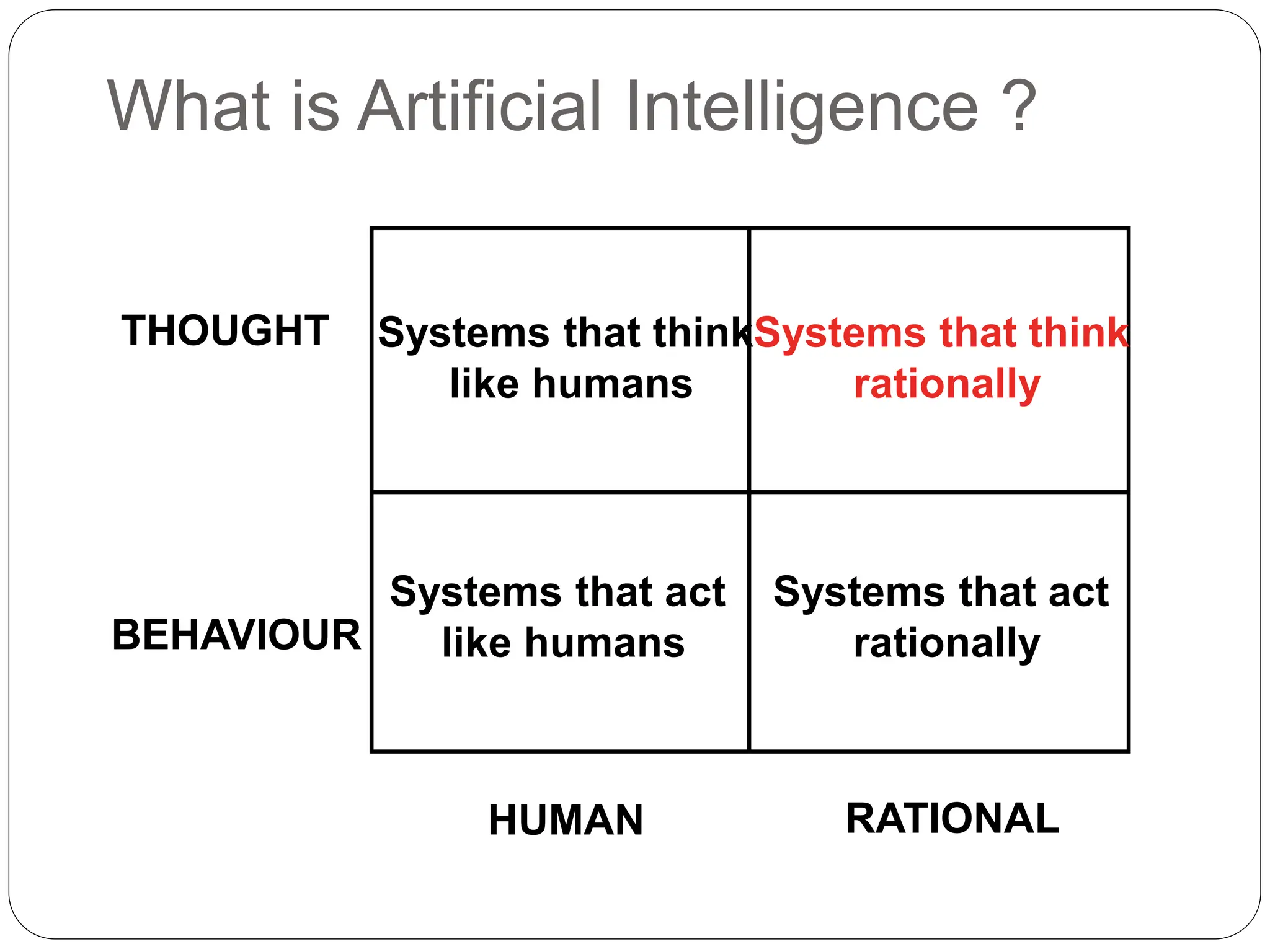
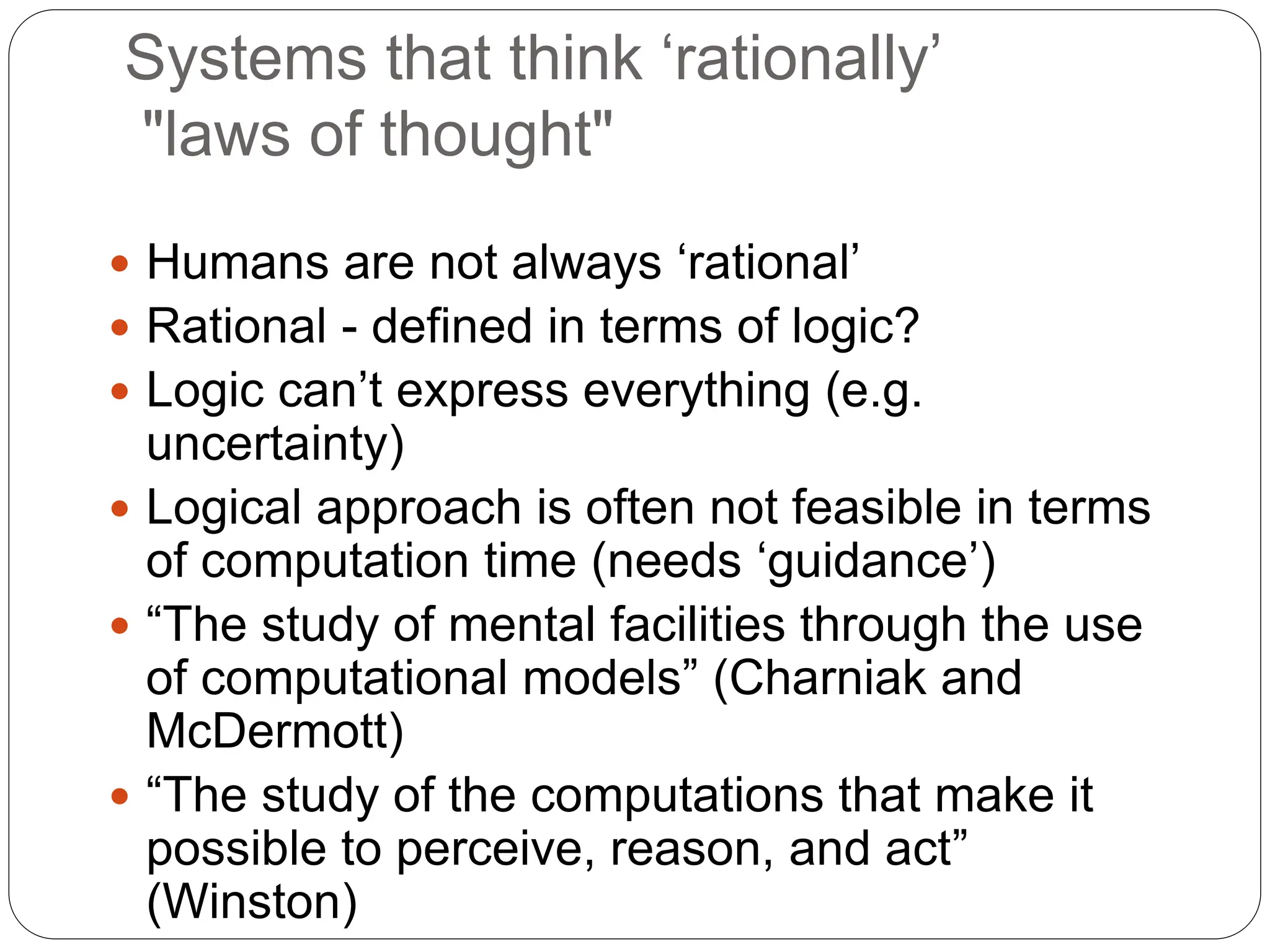
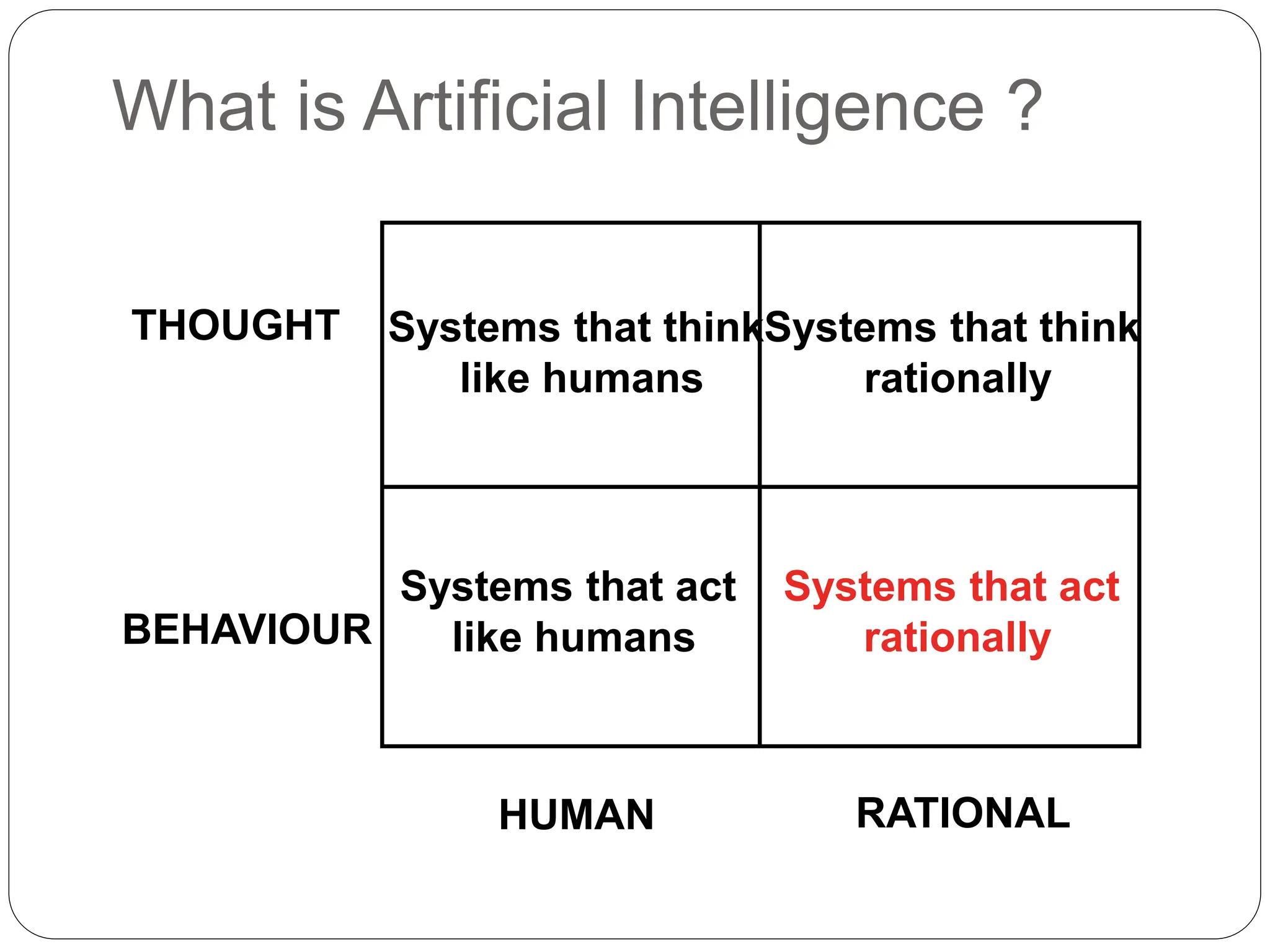
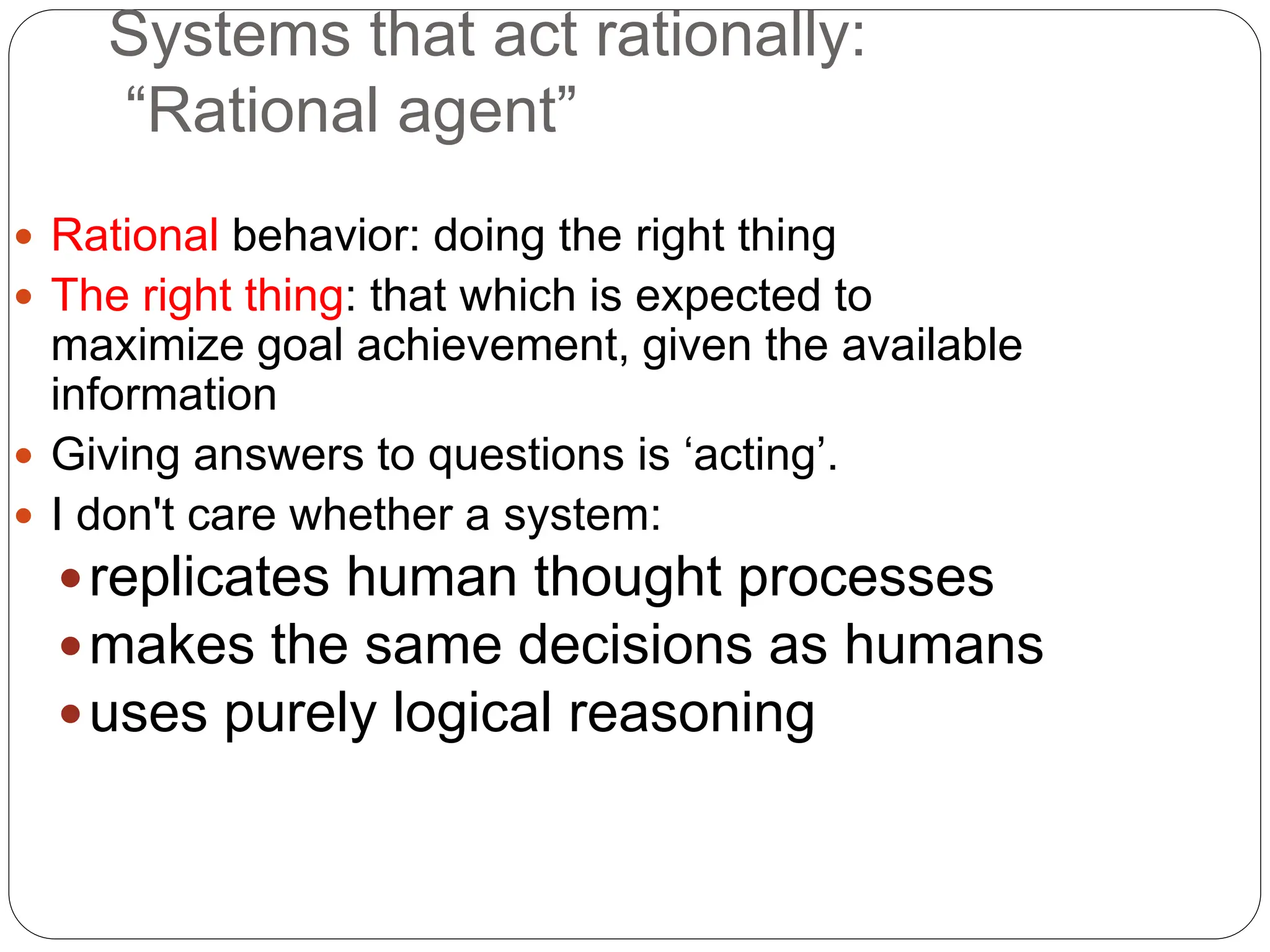
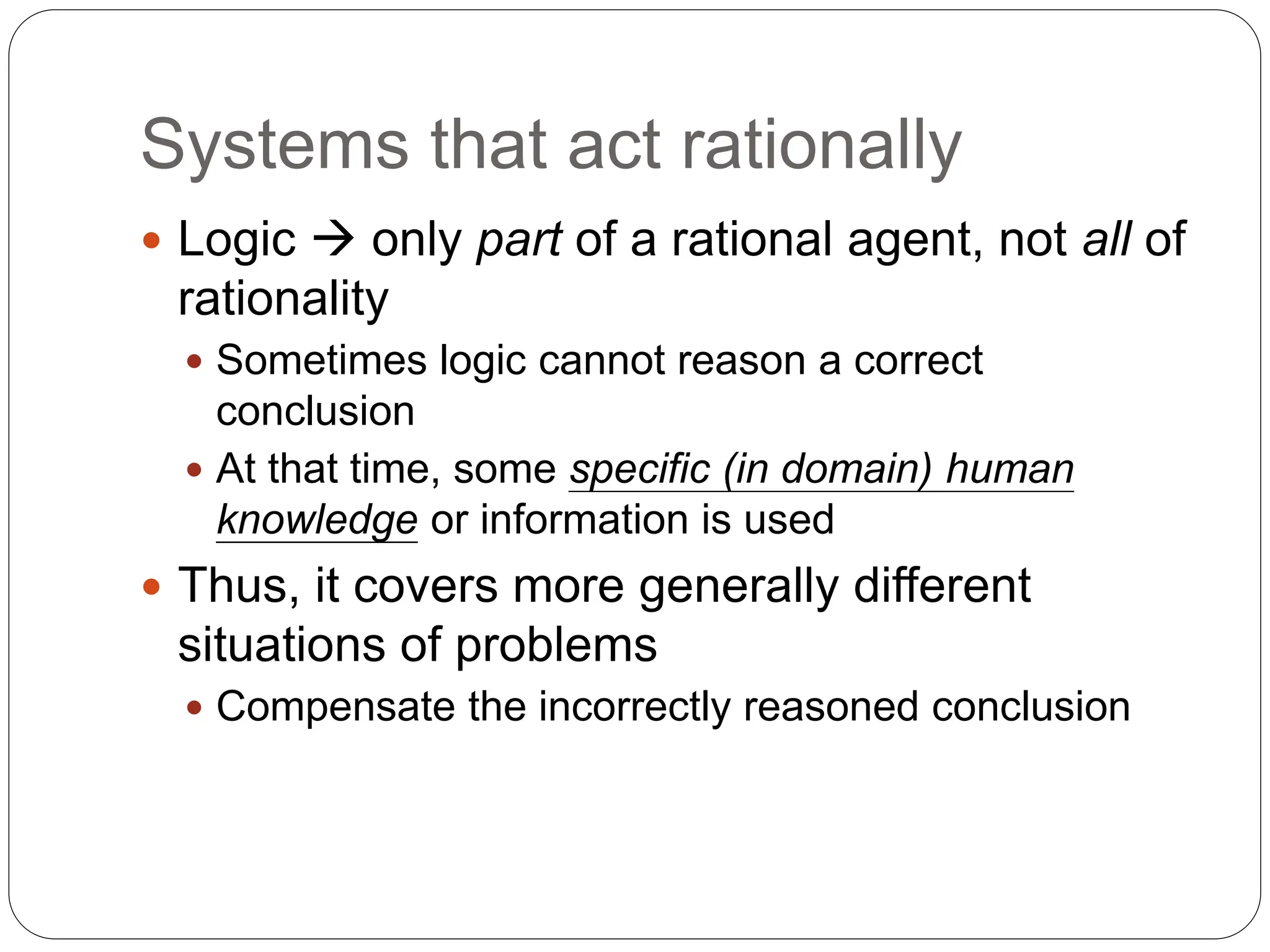
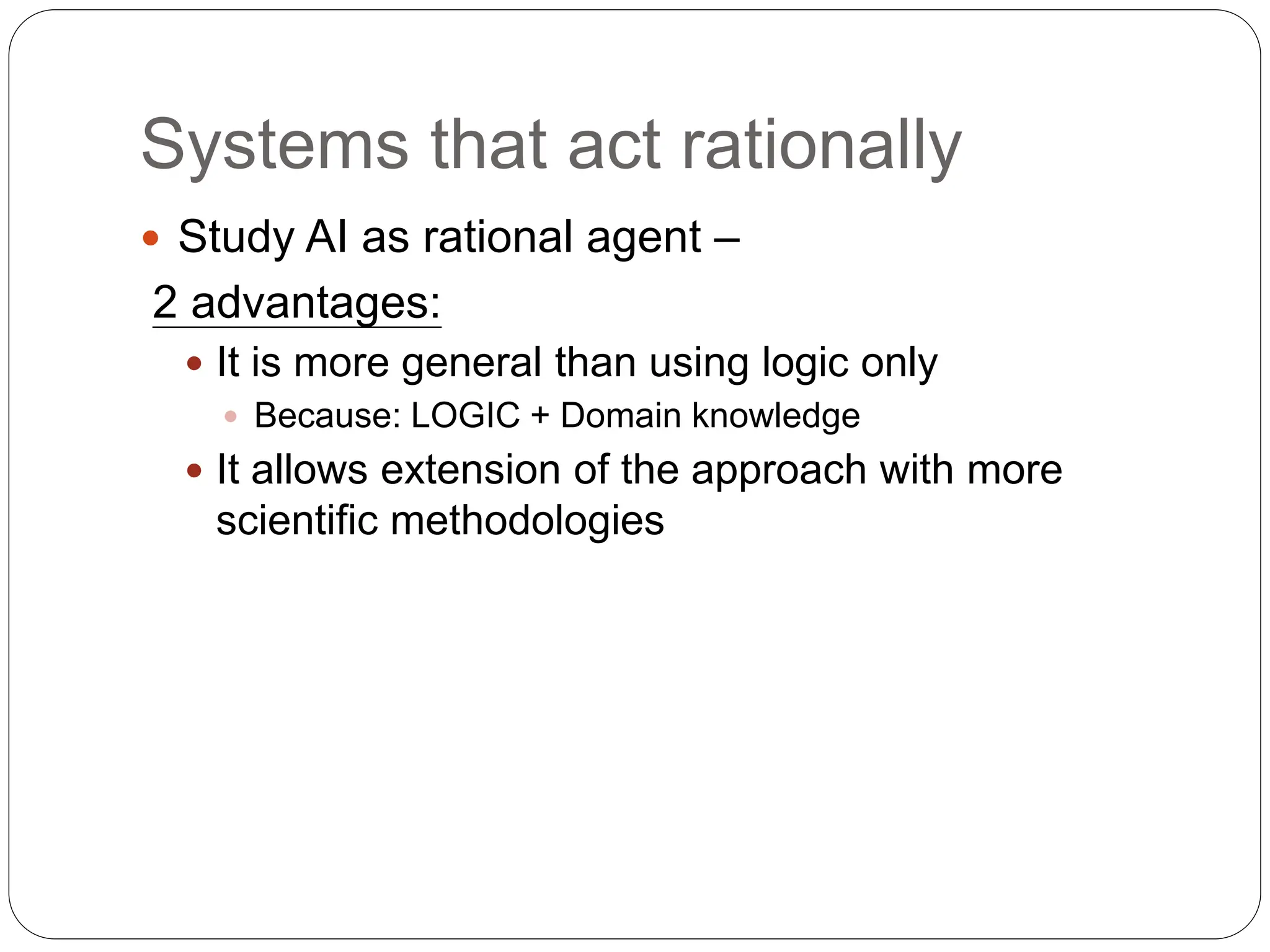
![Rational agents
An agent is an entity that perceives and acts
This course is about designing rational agents
Abstractly, an agent is a function from percept
histories to actions:
[f: P* A]
For any given class of environments and tasks, we
seek the agent (or class of agents) with the best
performance
Caveat: computational limitations make perfect
rationality unachievable
design best program for given machine resources
](https://image.slidesharecdn.com/901470chap1-240330135046-867ef03a/75/901470_Chap1-ppt-artificial-intelligence-20-2048.jpg)
![ Artificial
Produced by human art or effort, rather than
originating naturally.
Intelligence
is the ability to acquire knowledge and use it"
[Pigford and Baur]
So AI was defined as:
AI is the study of ideas that enable computers to be
intelligent.
AI is the part of computer science concerned with
design of computer systems that exhibit human
intelligence(From the Concise Oxford Dictionary)](https://image.slidesharecdn.com/901470chap1-240330135046-867ef03a/75/901470_Chap1-ppt-artificial-intelligence-21-2048.jpg)
